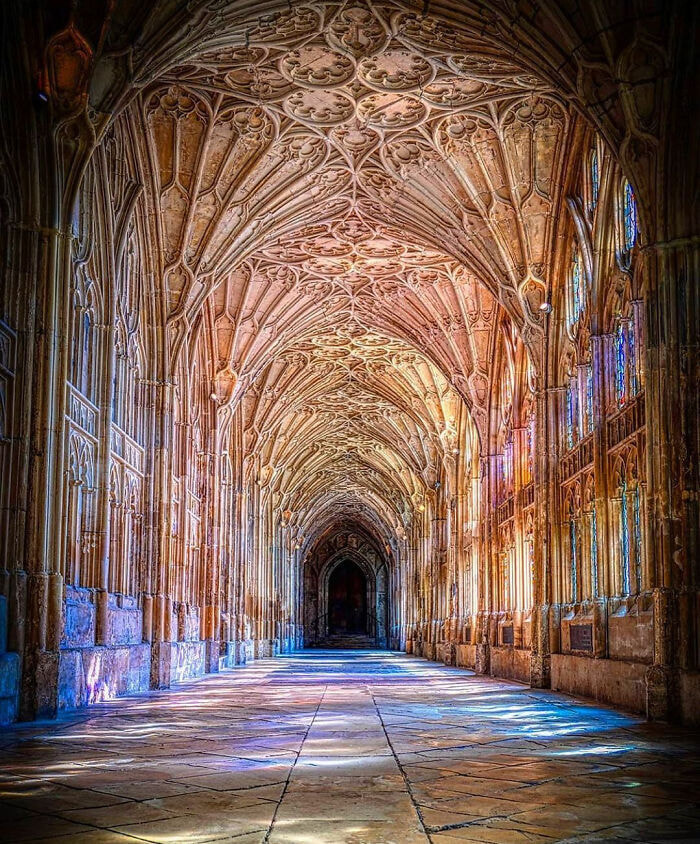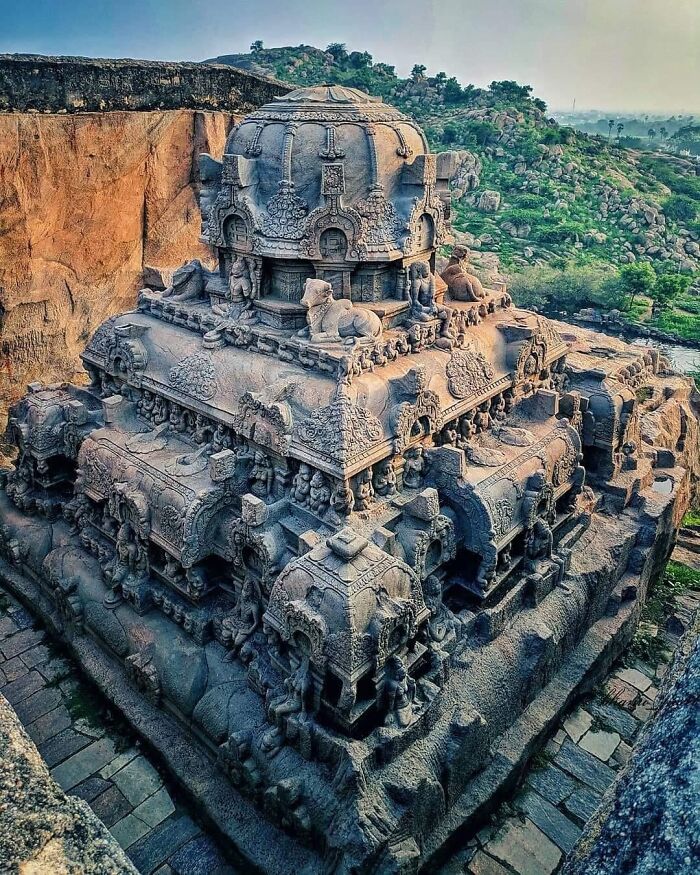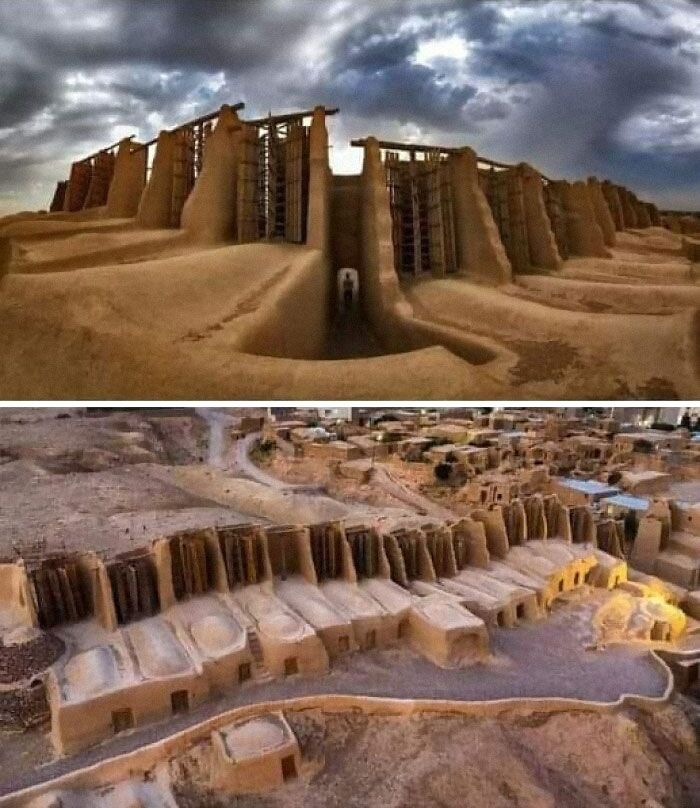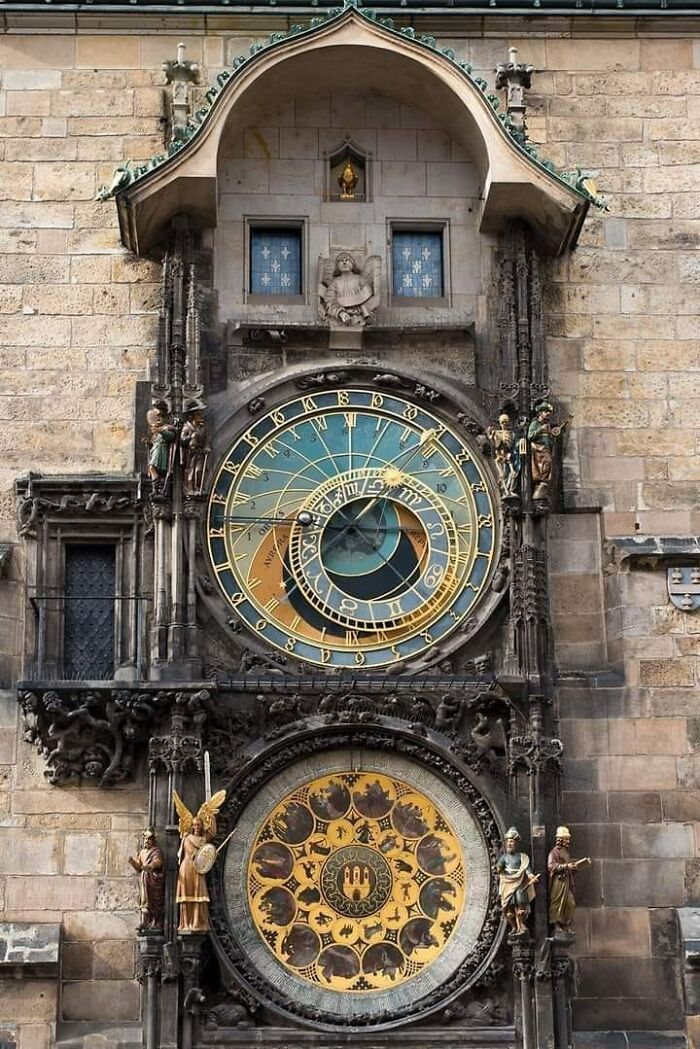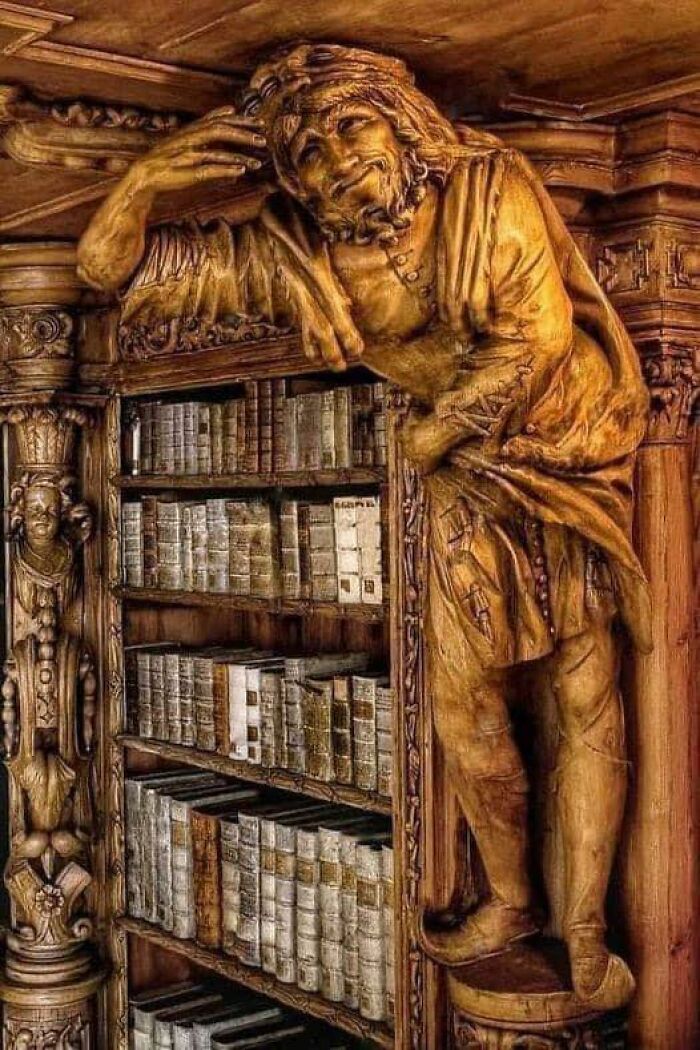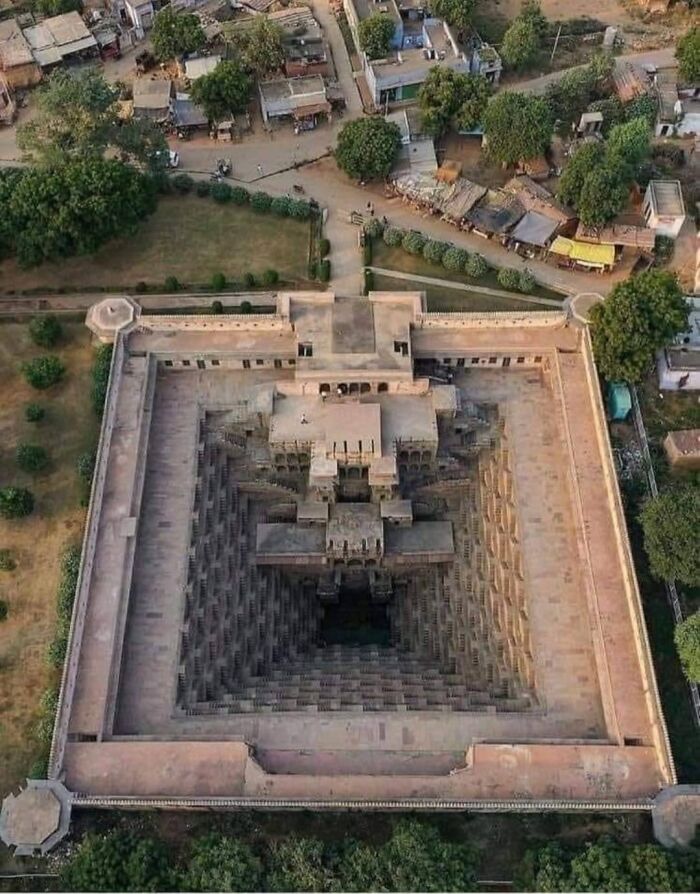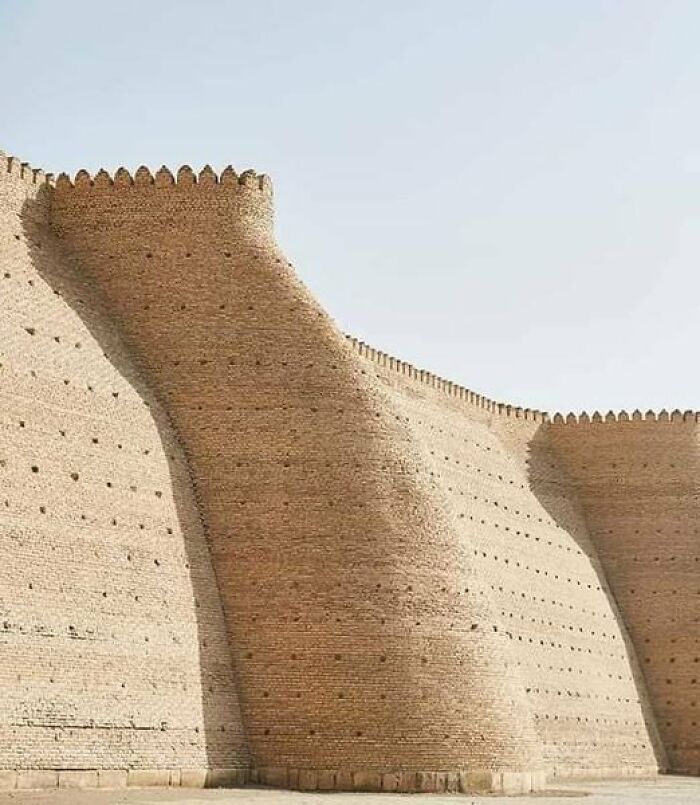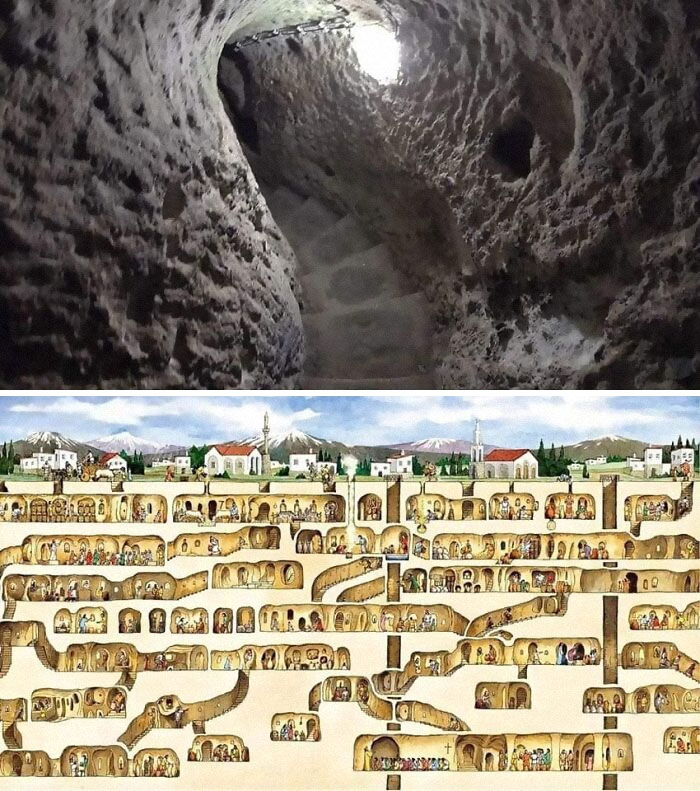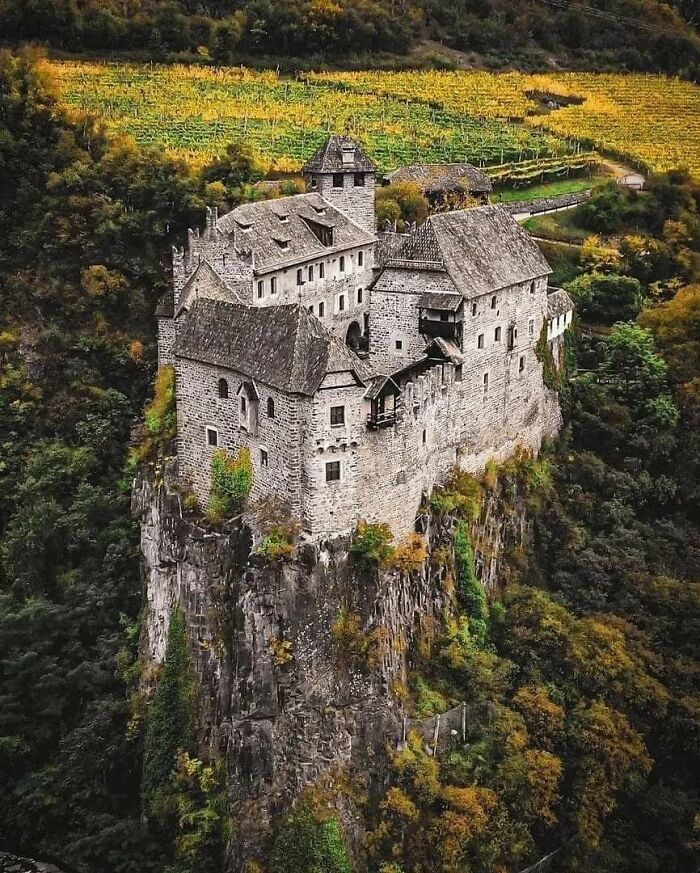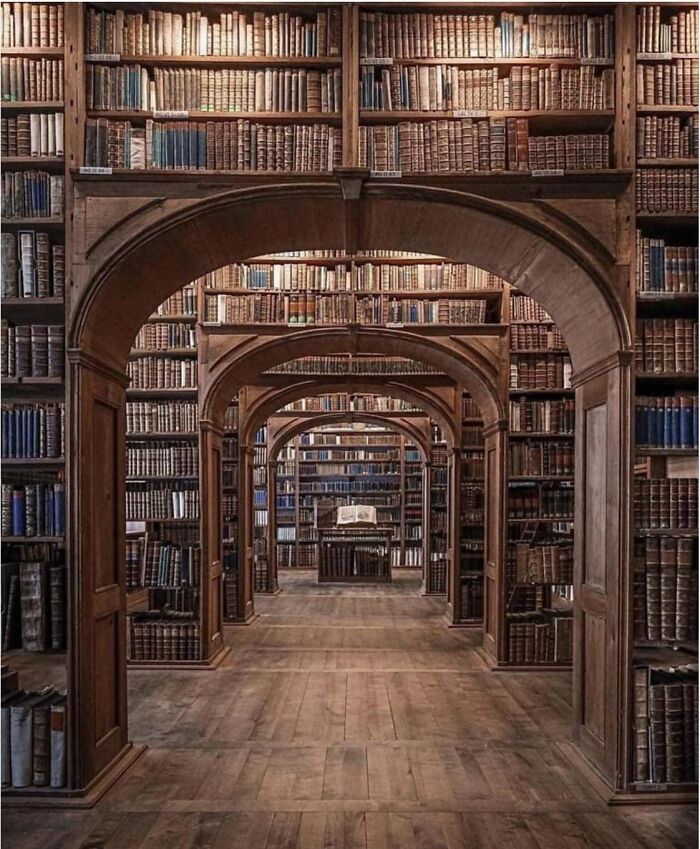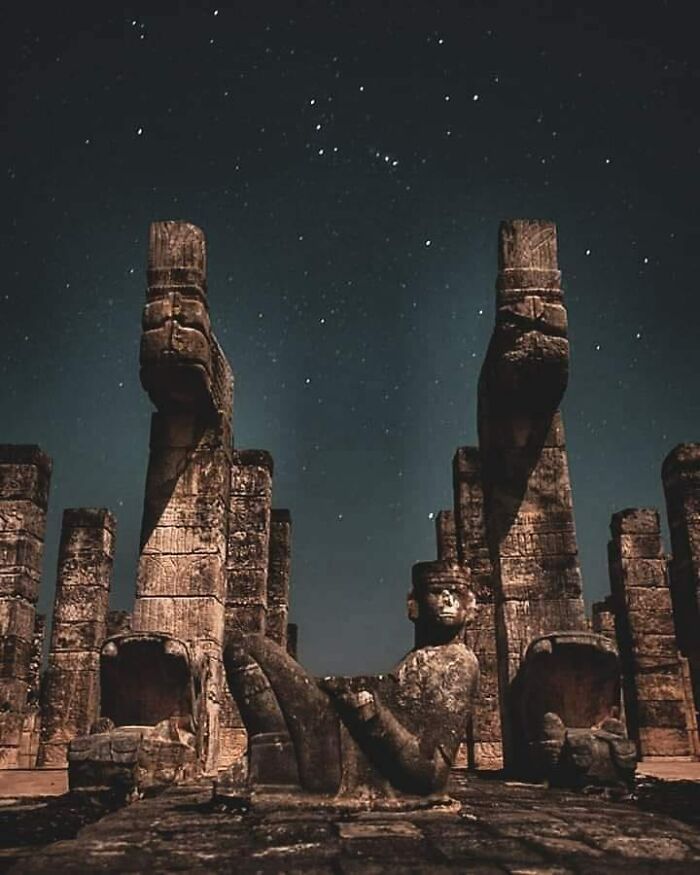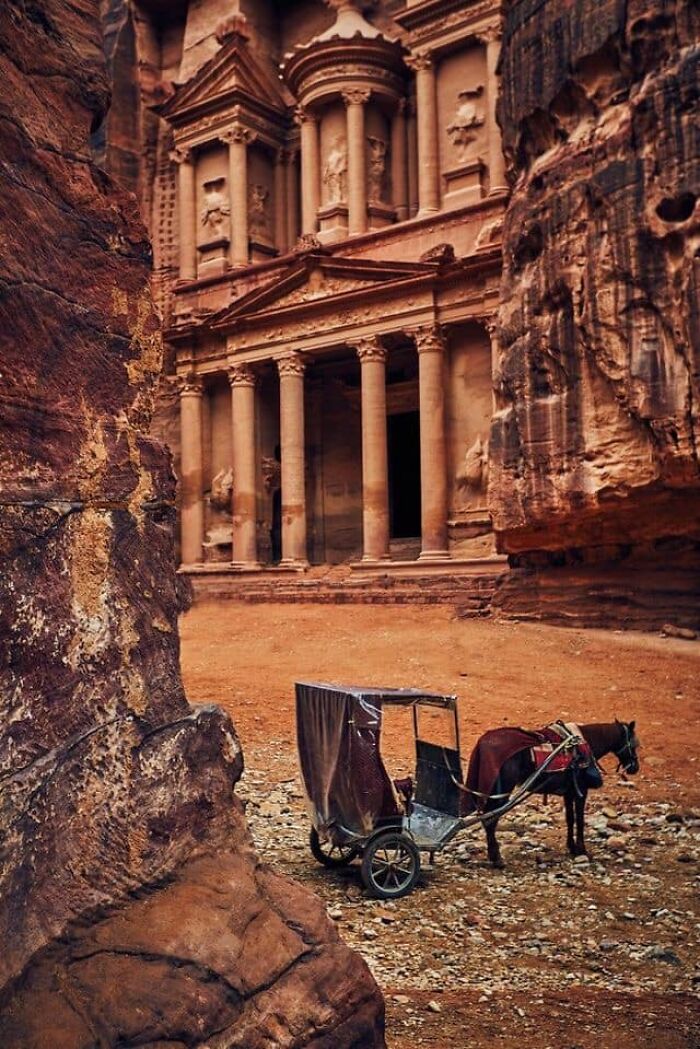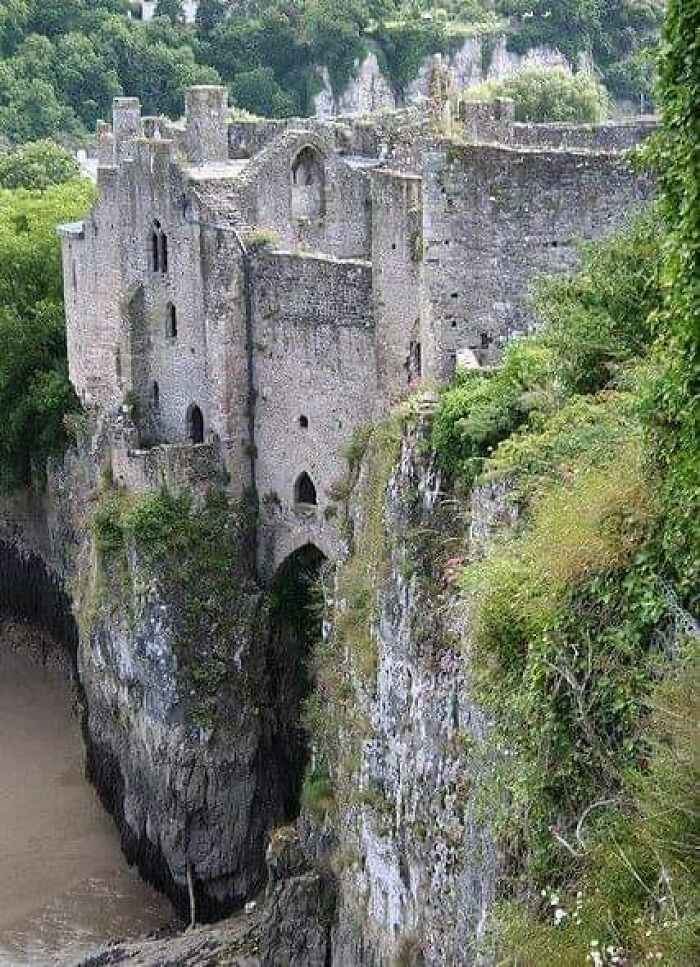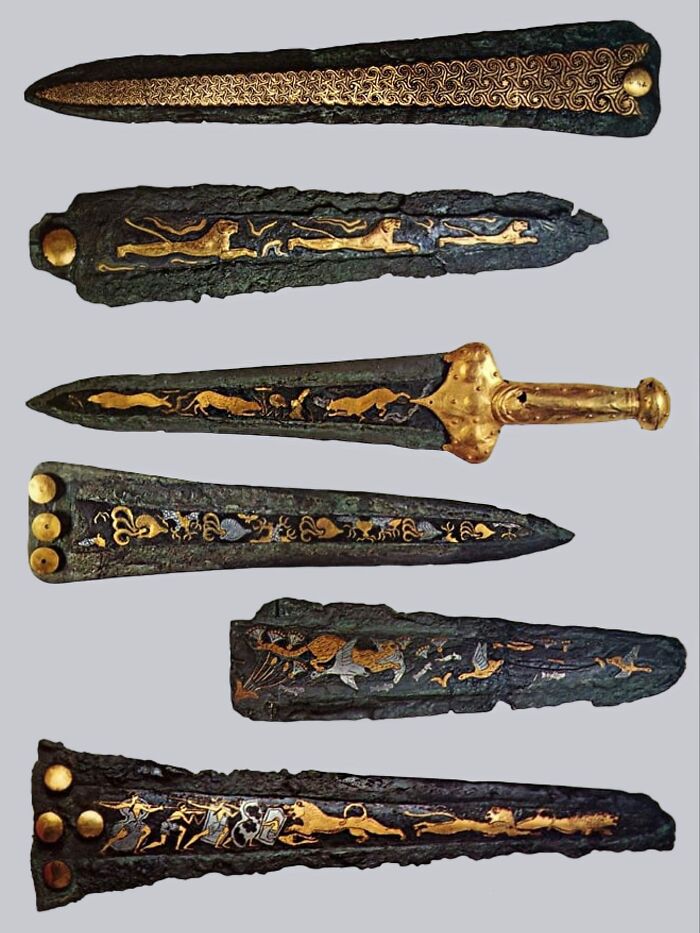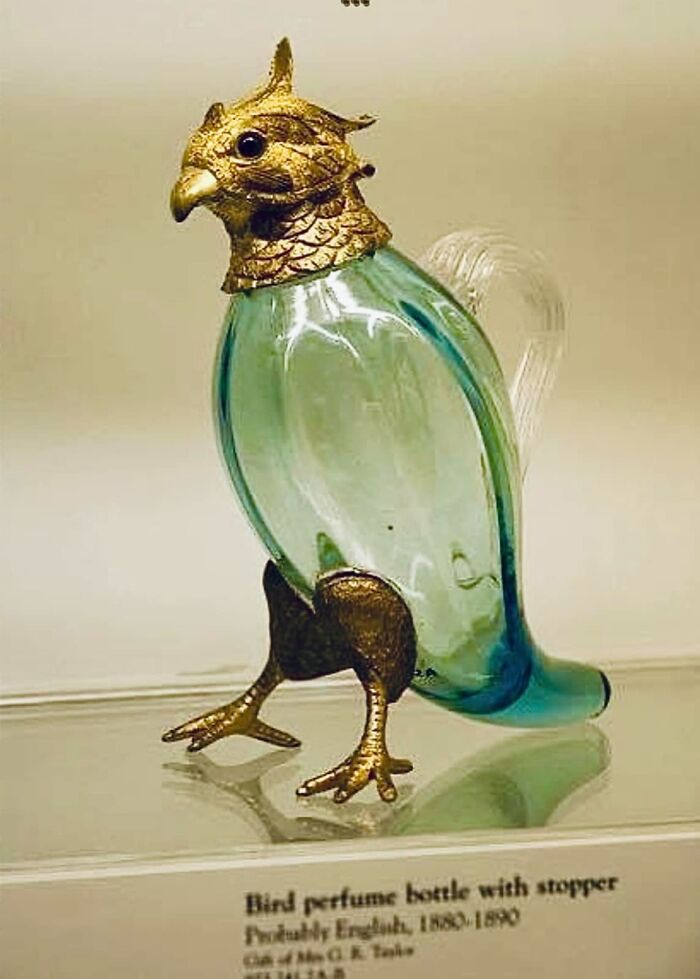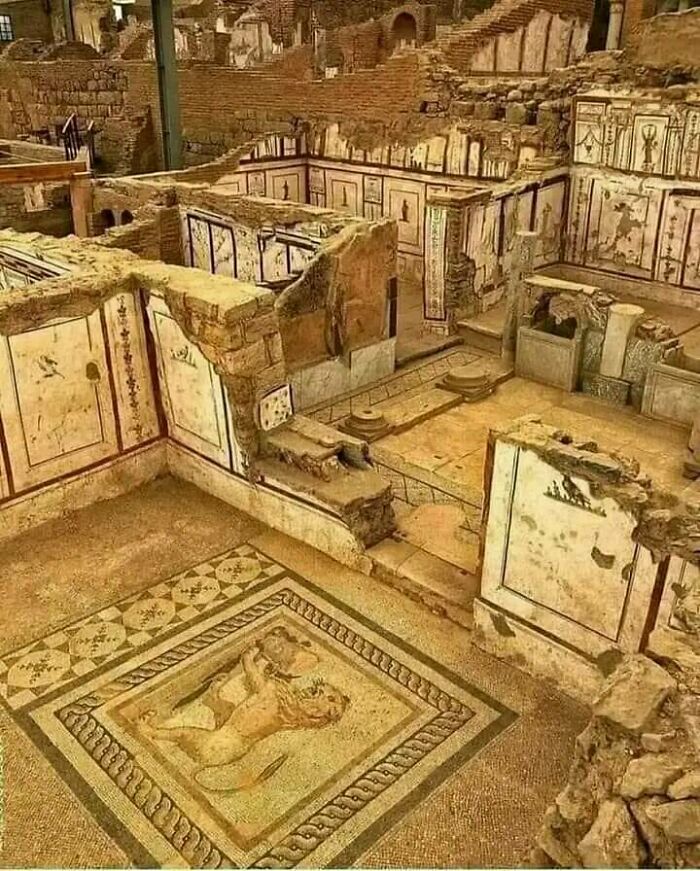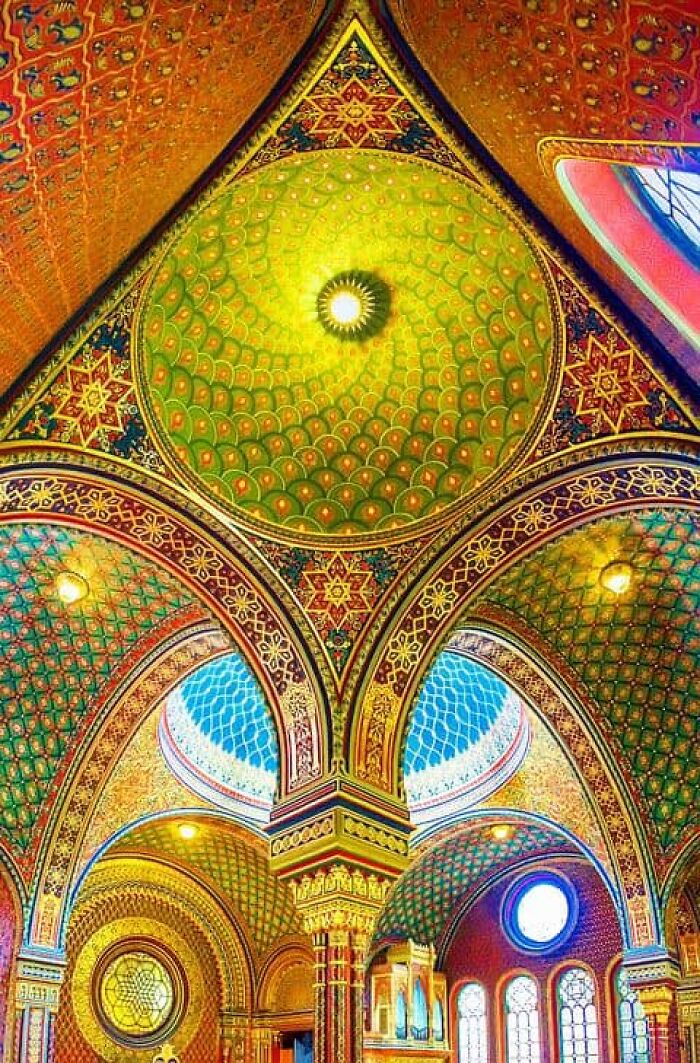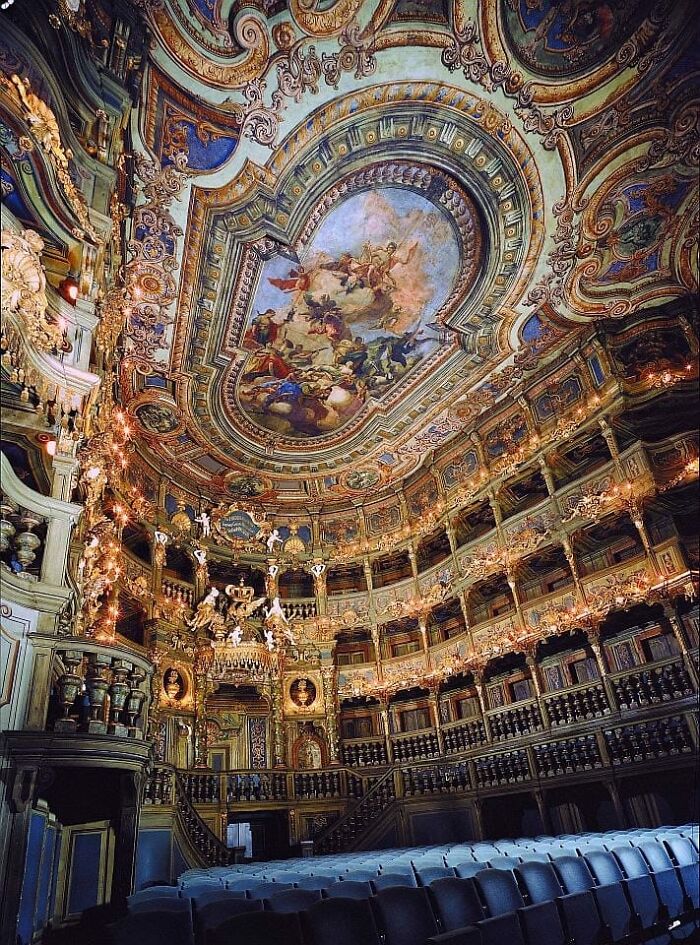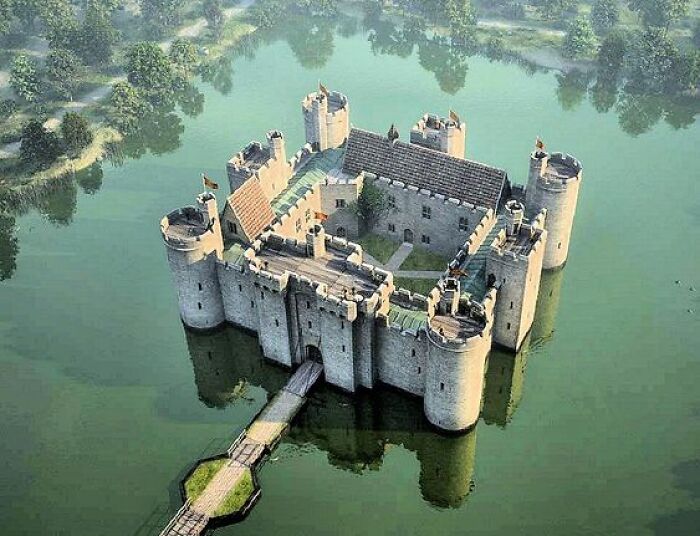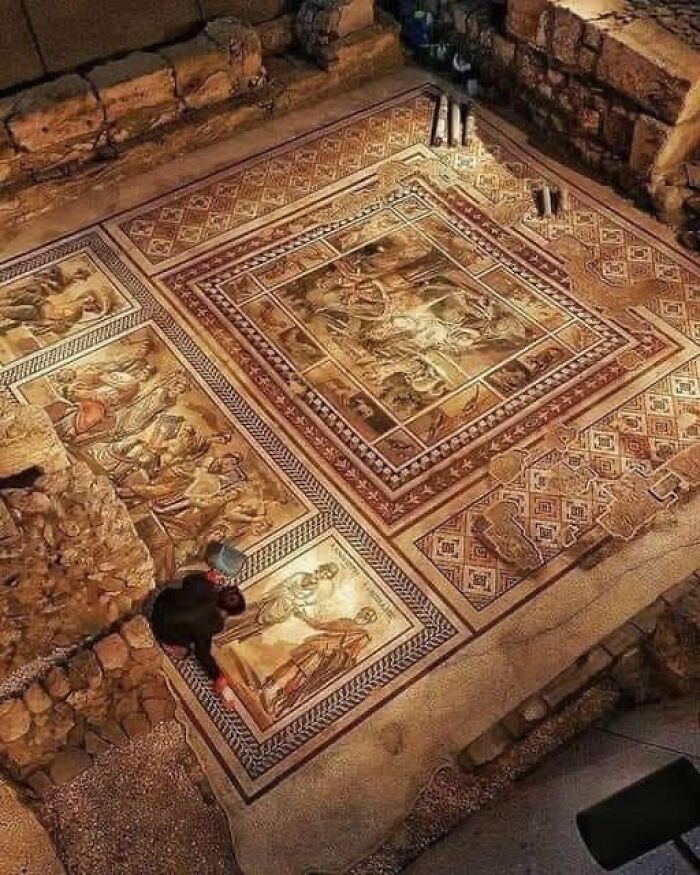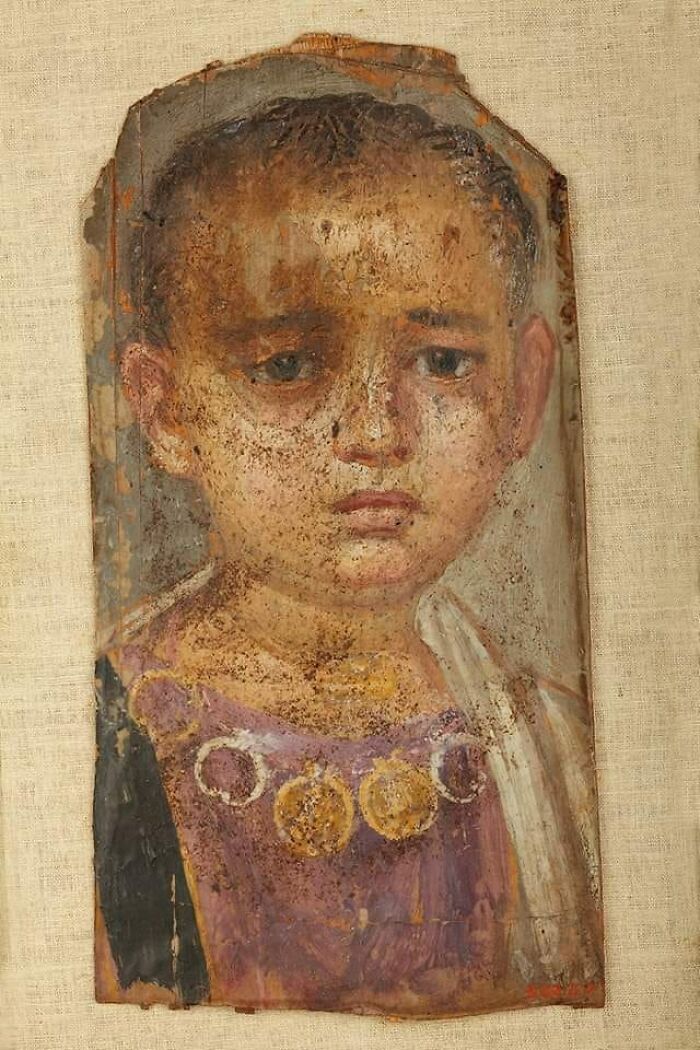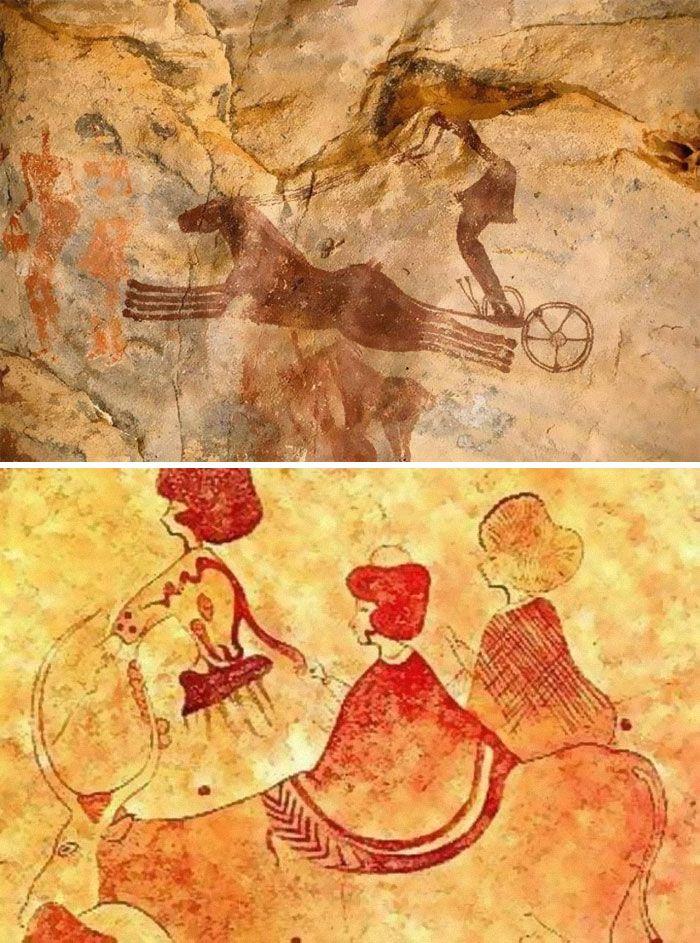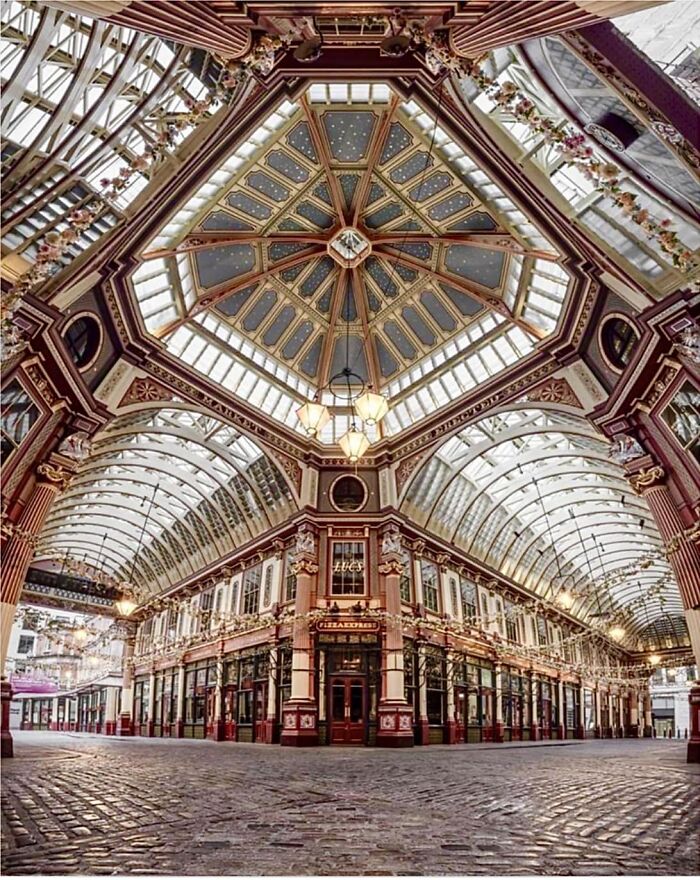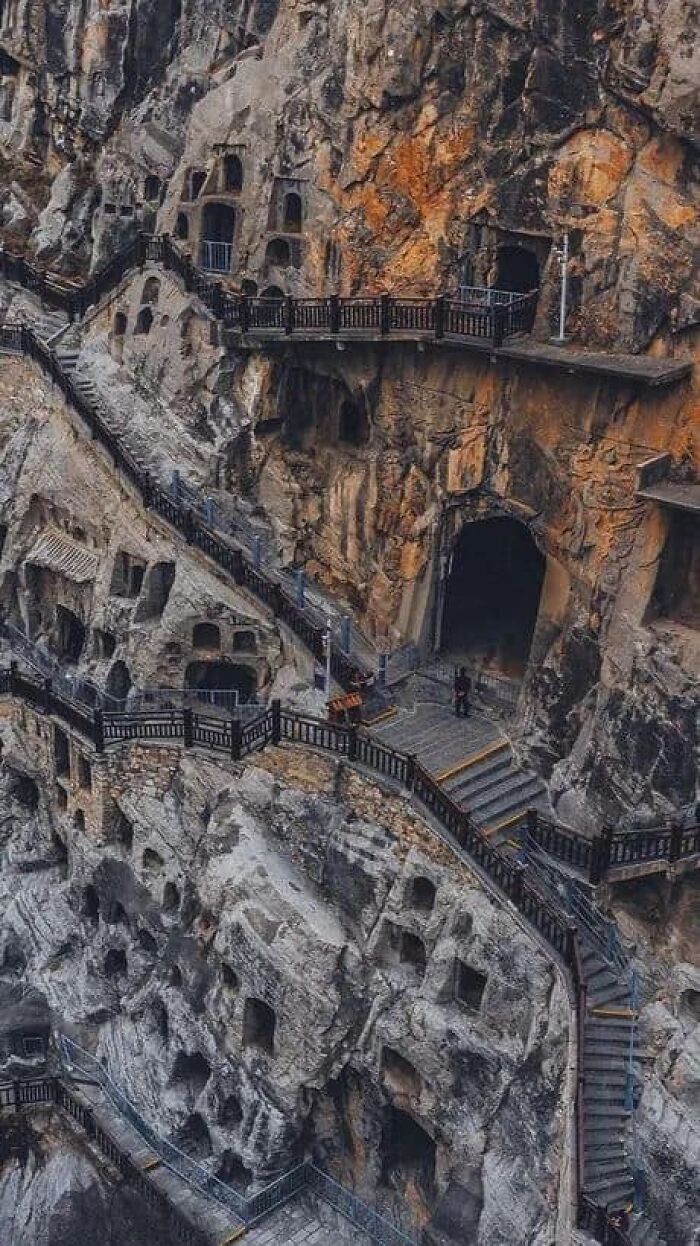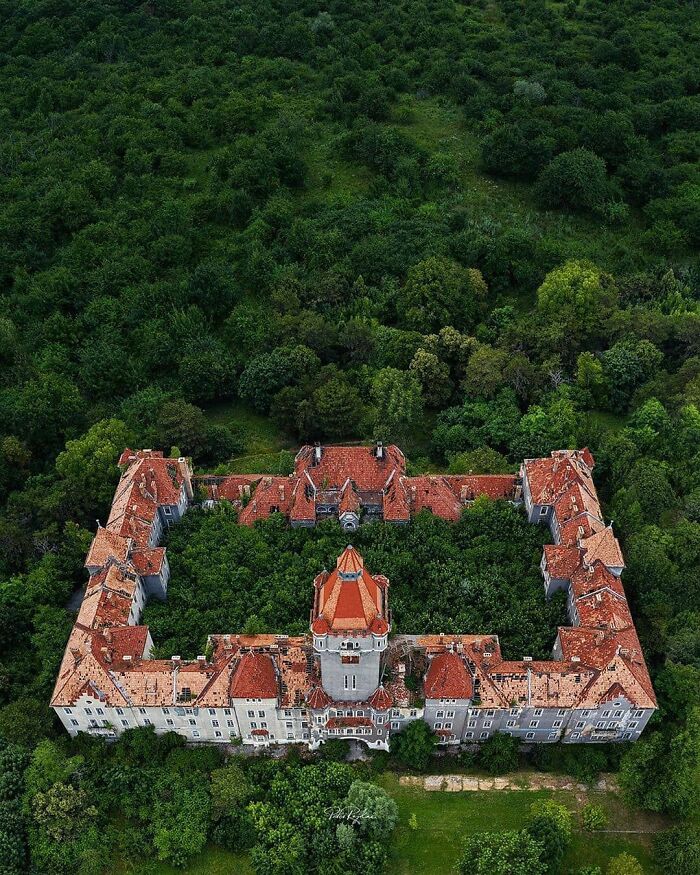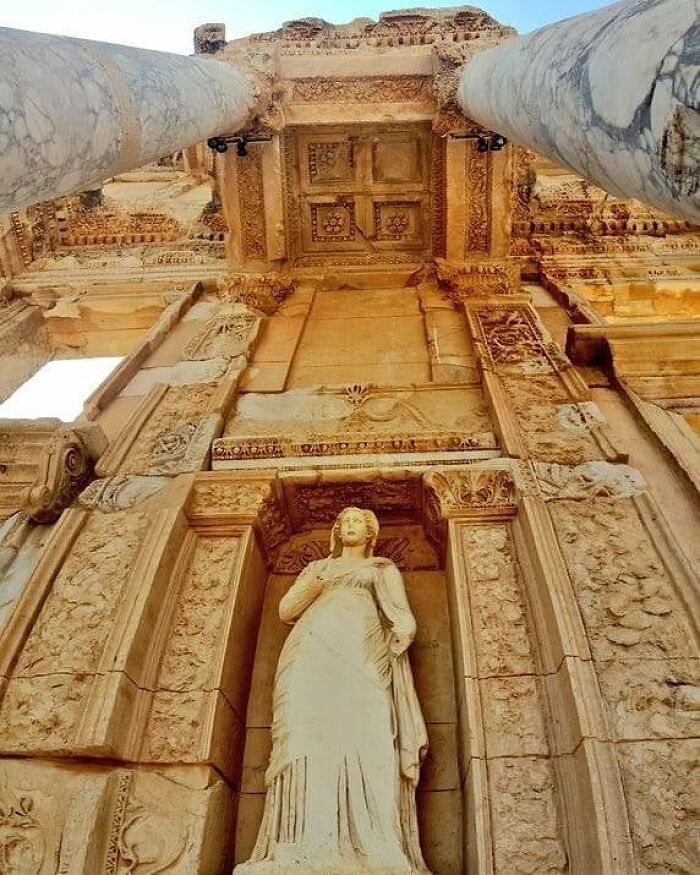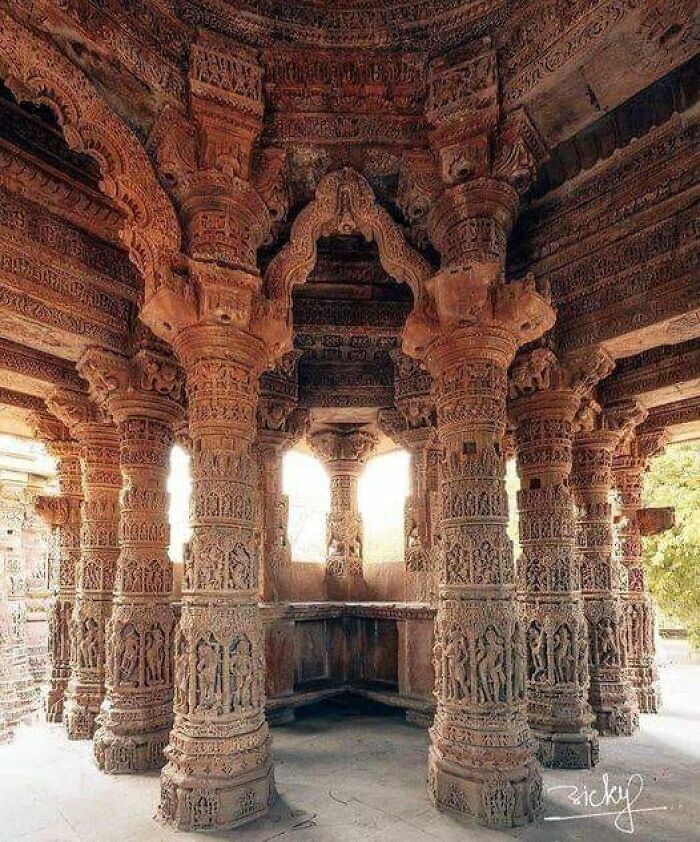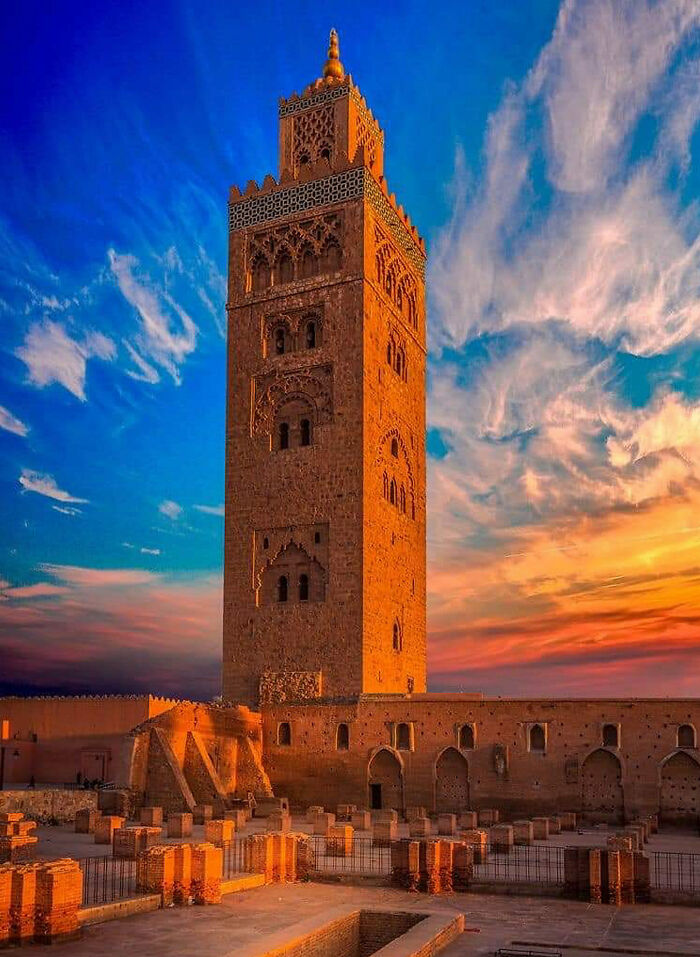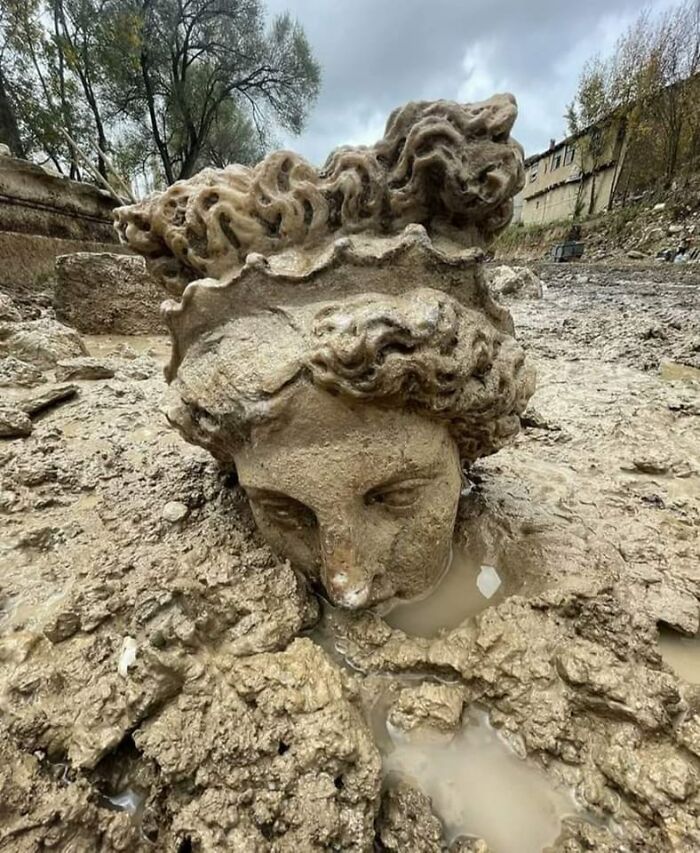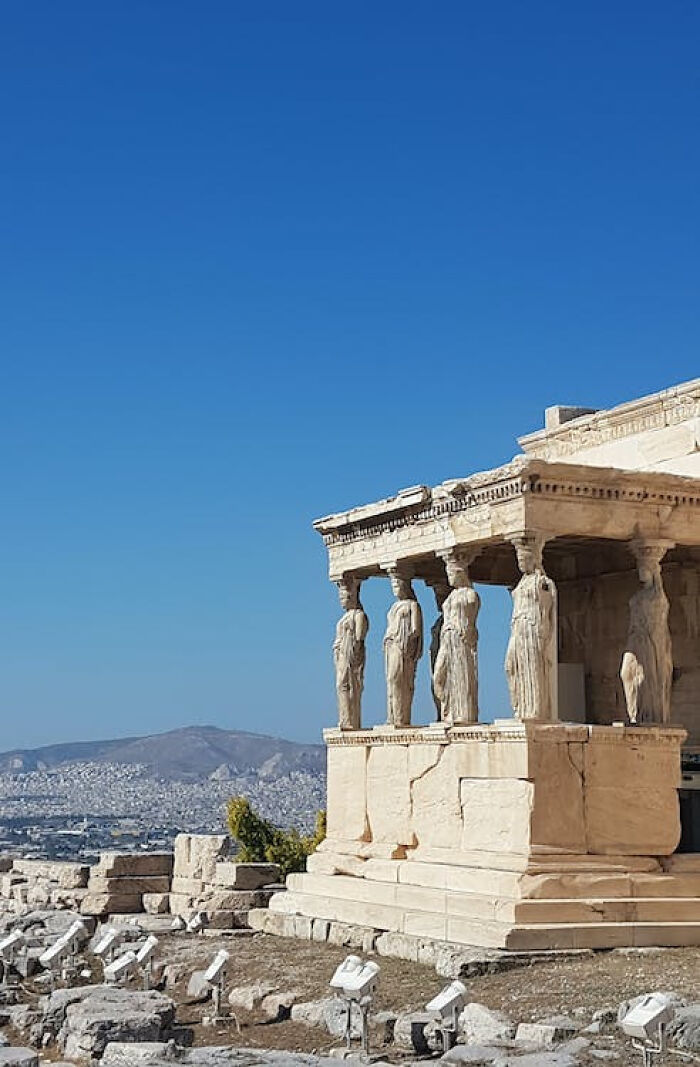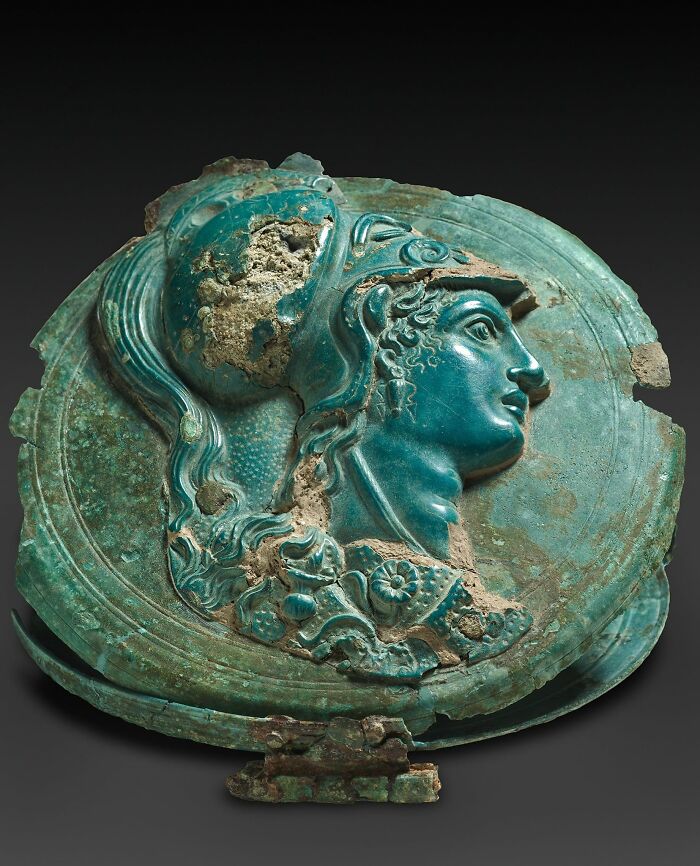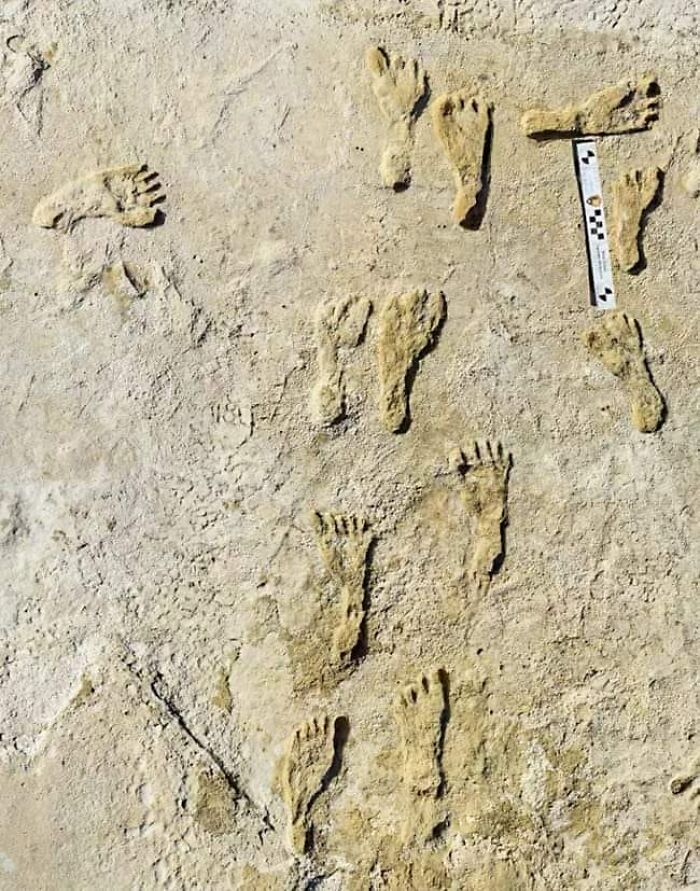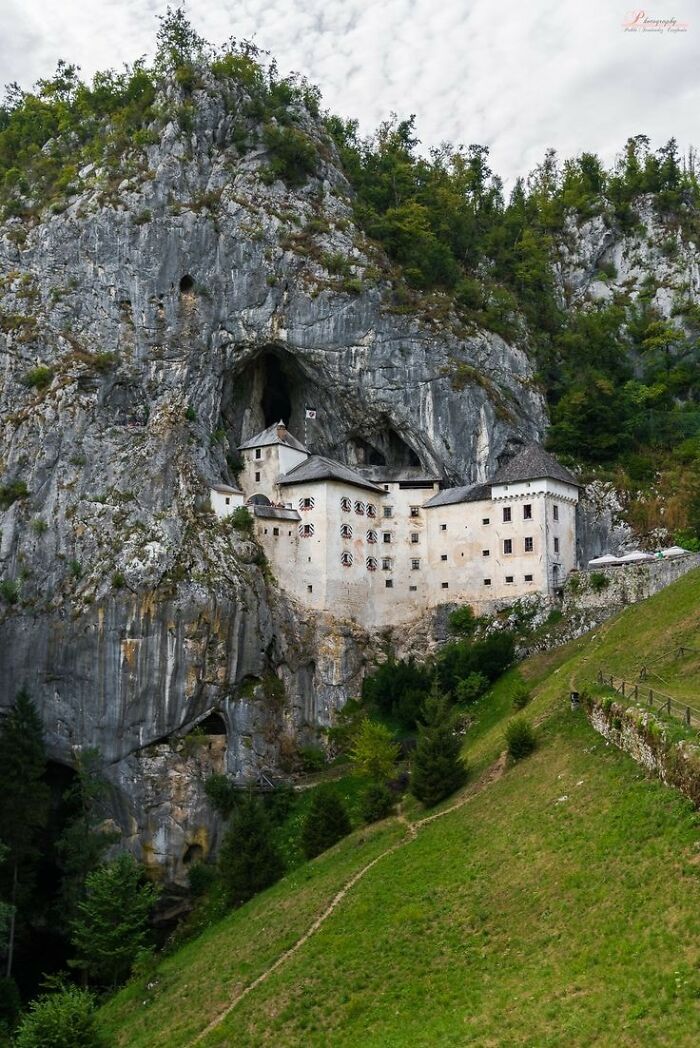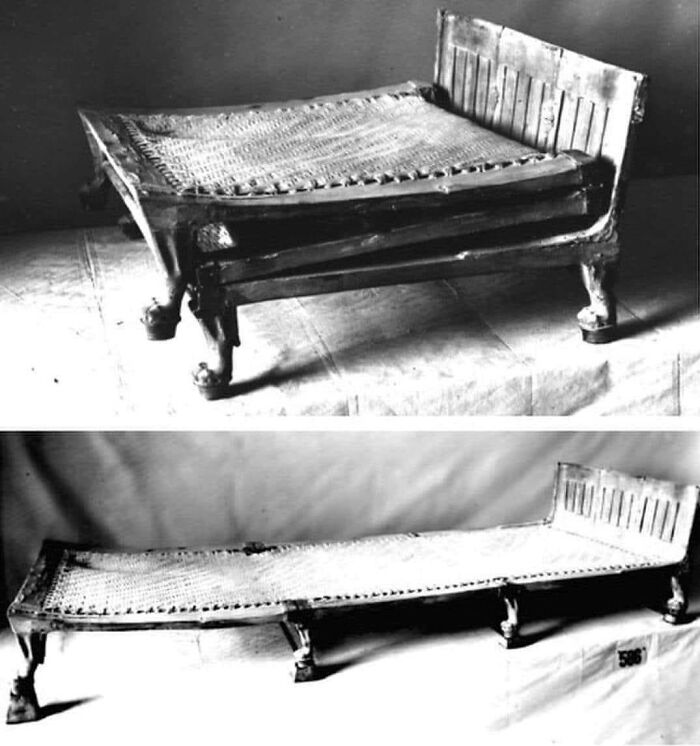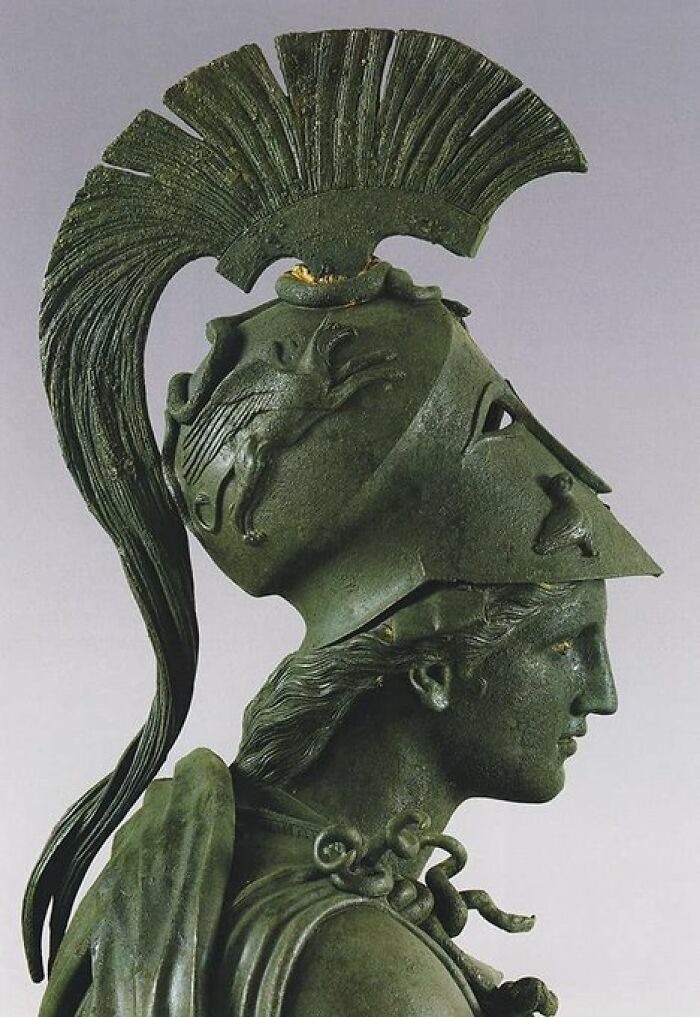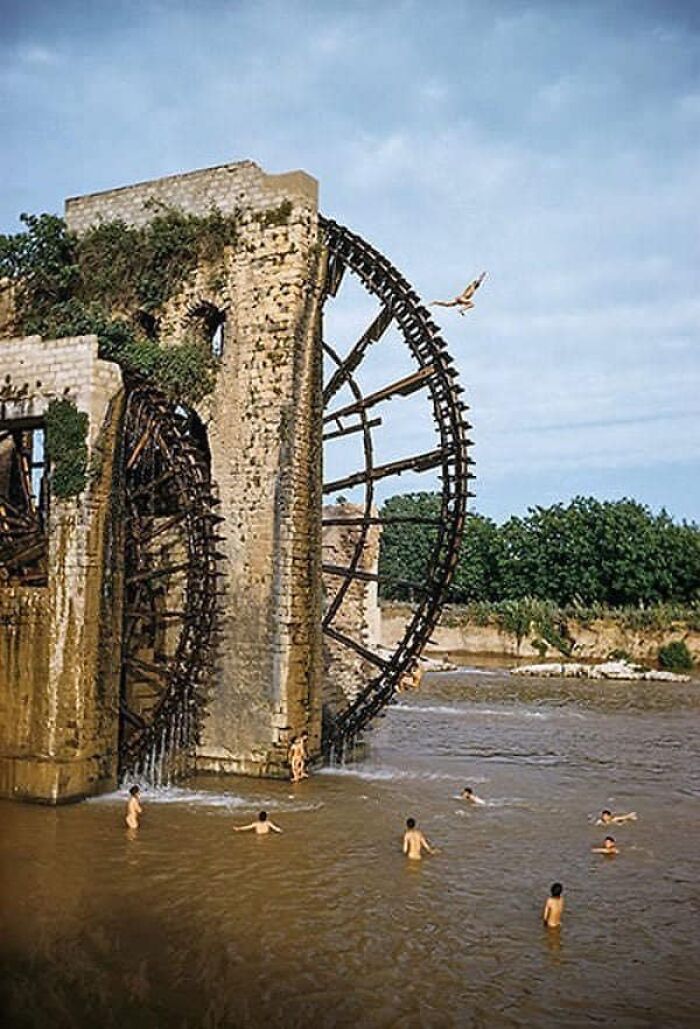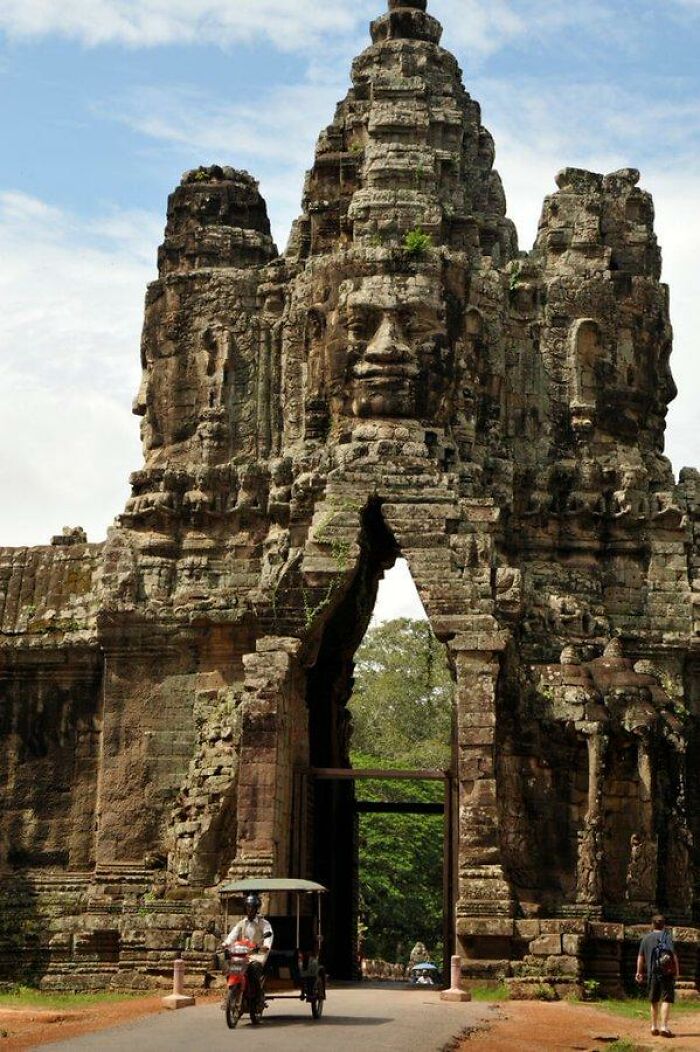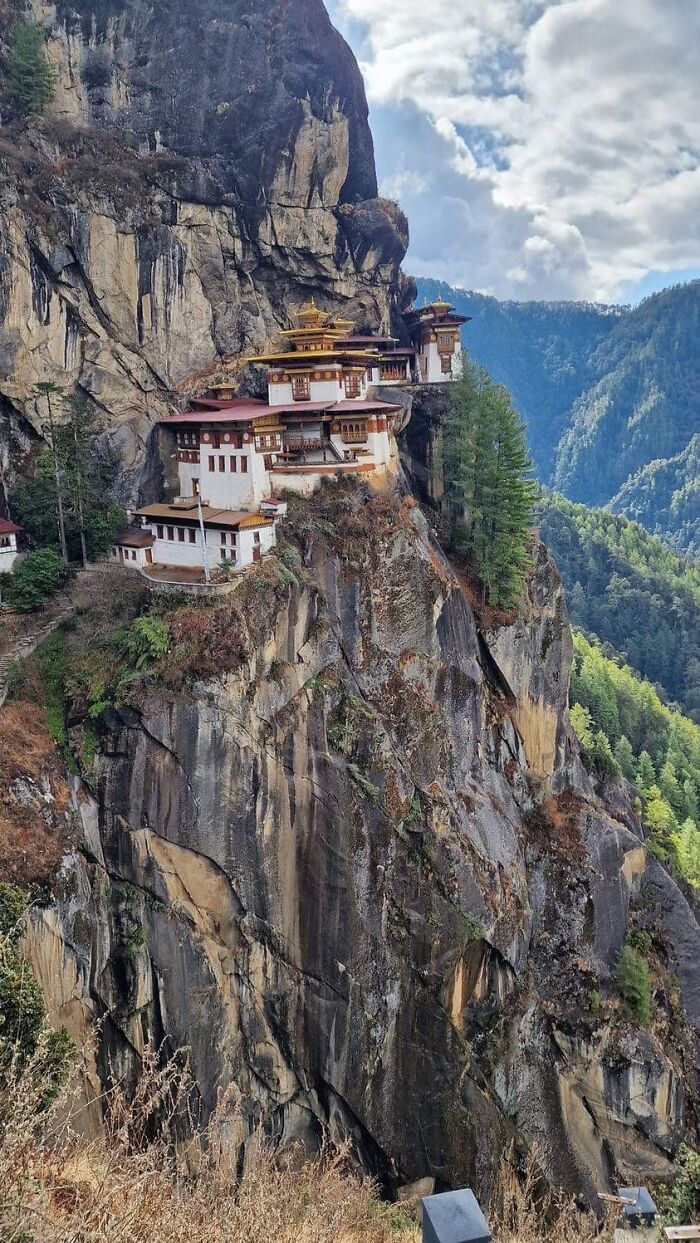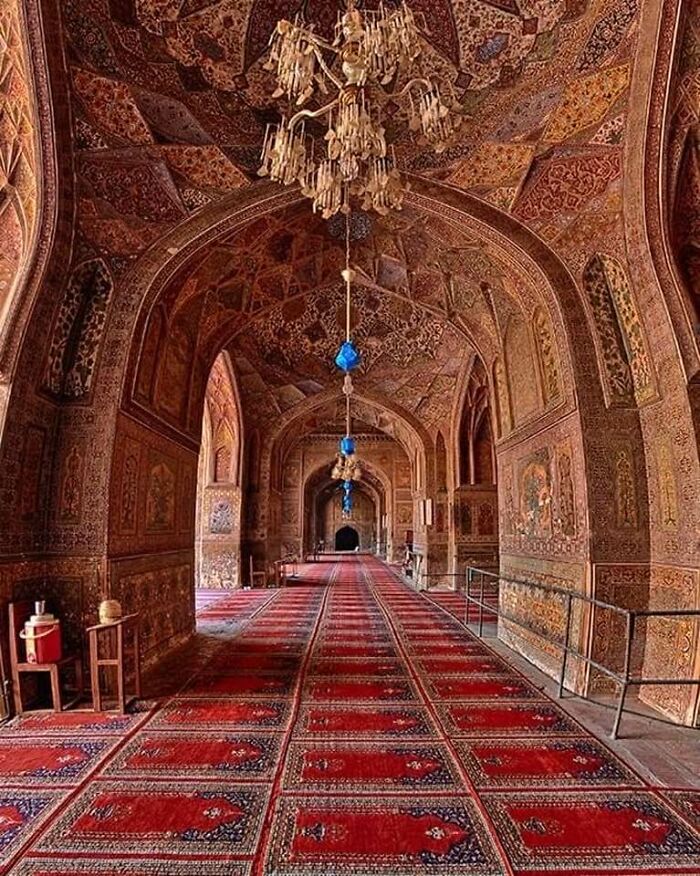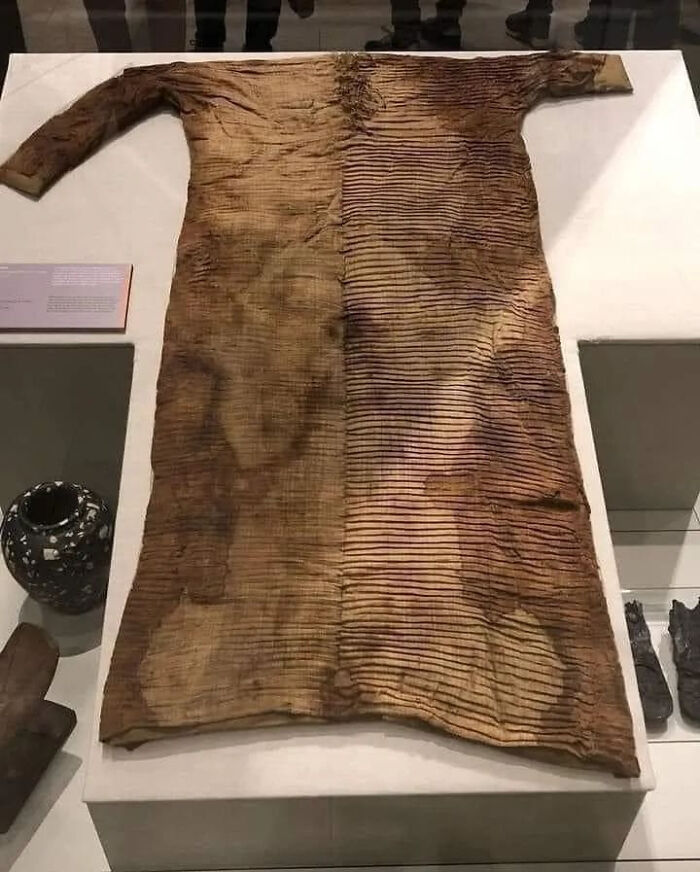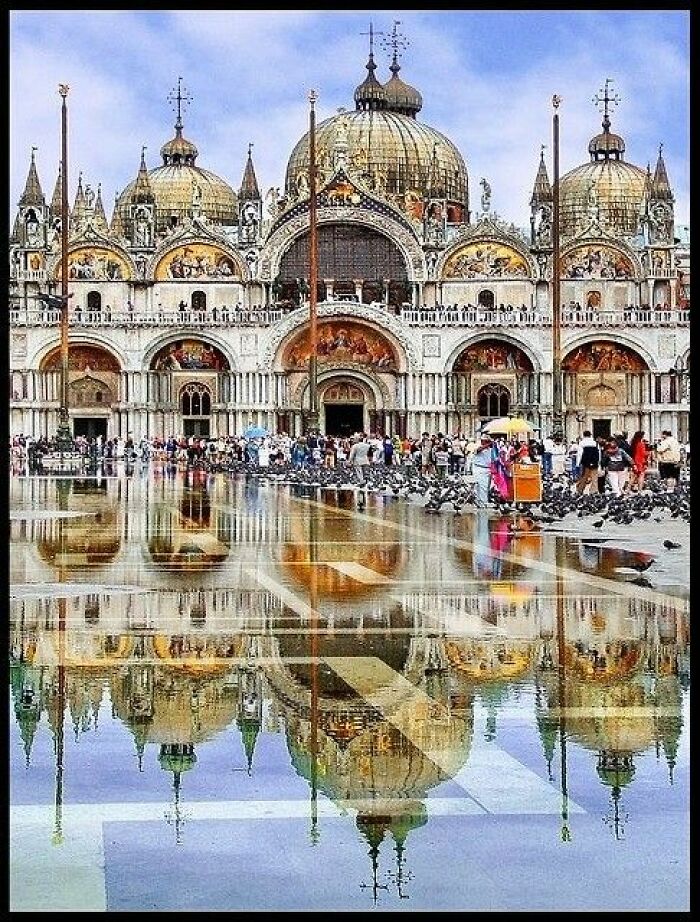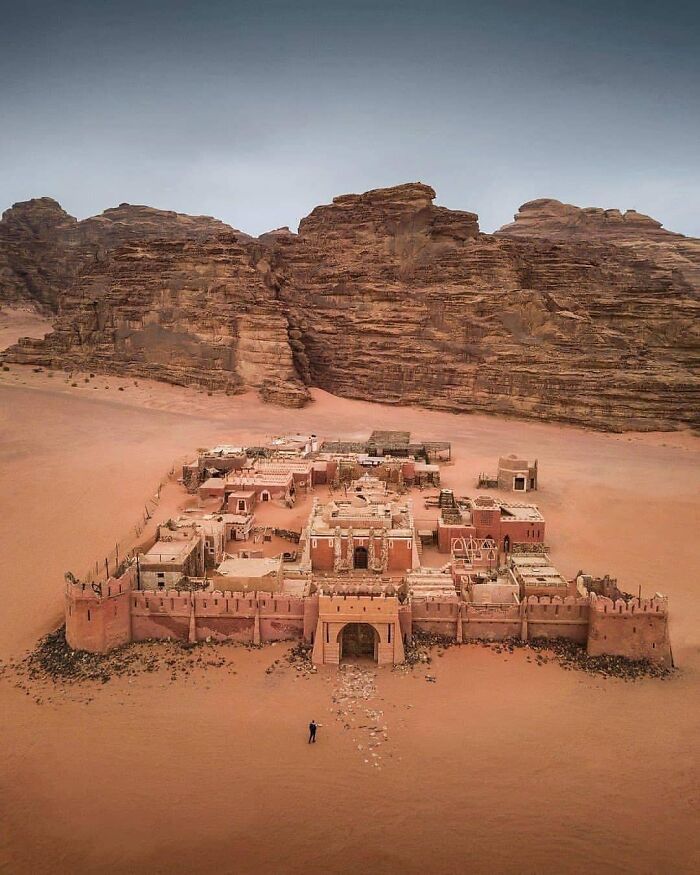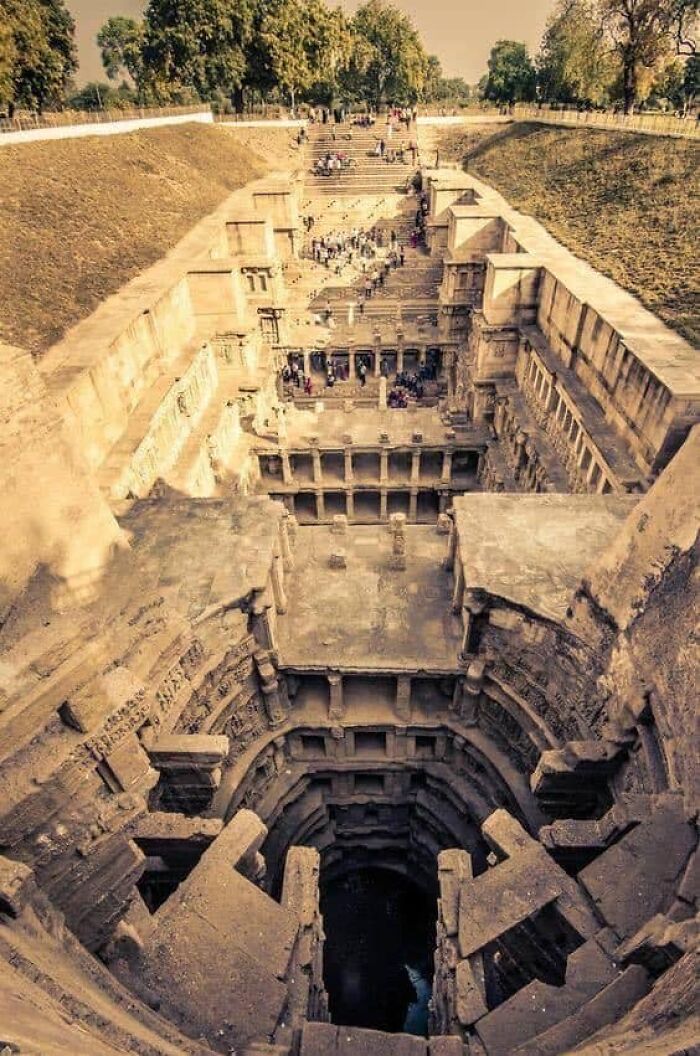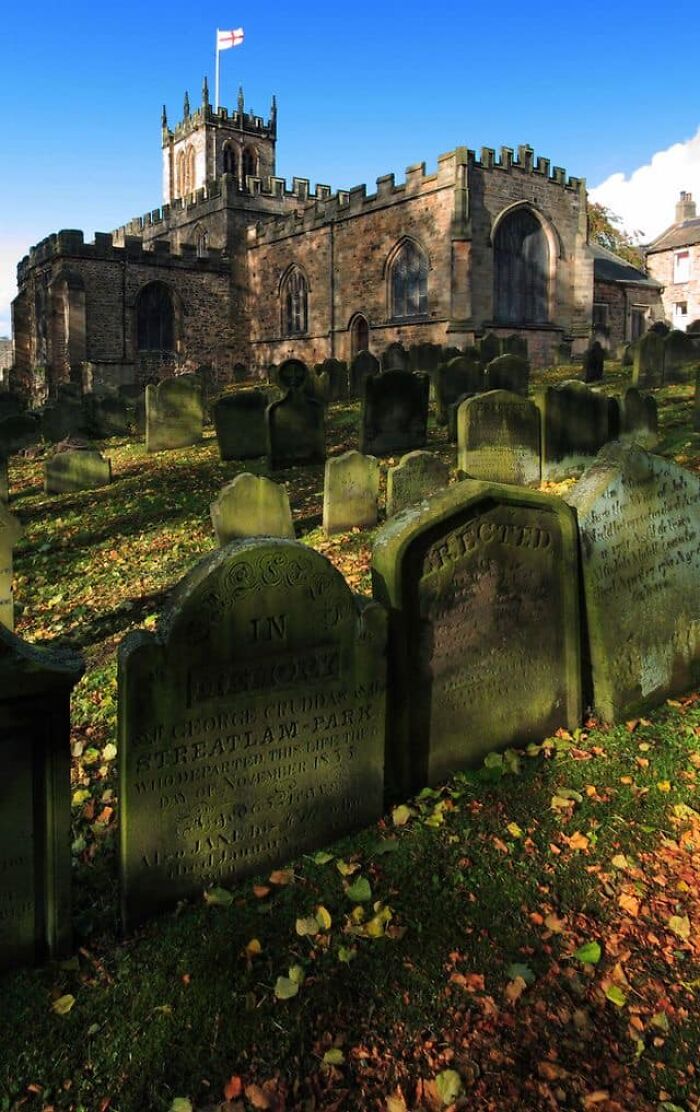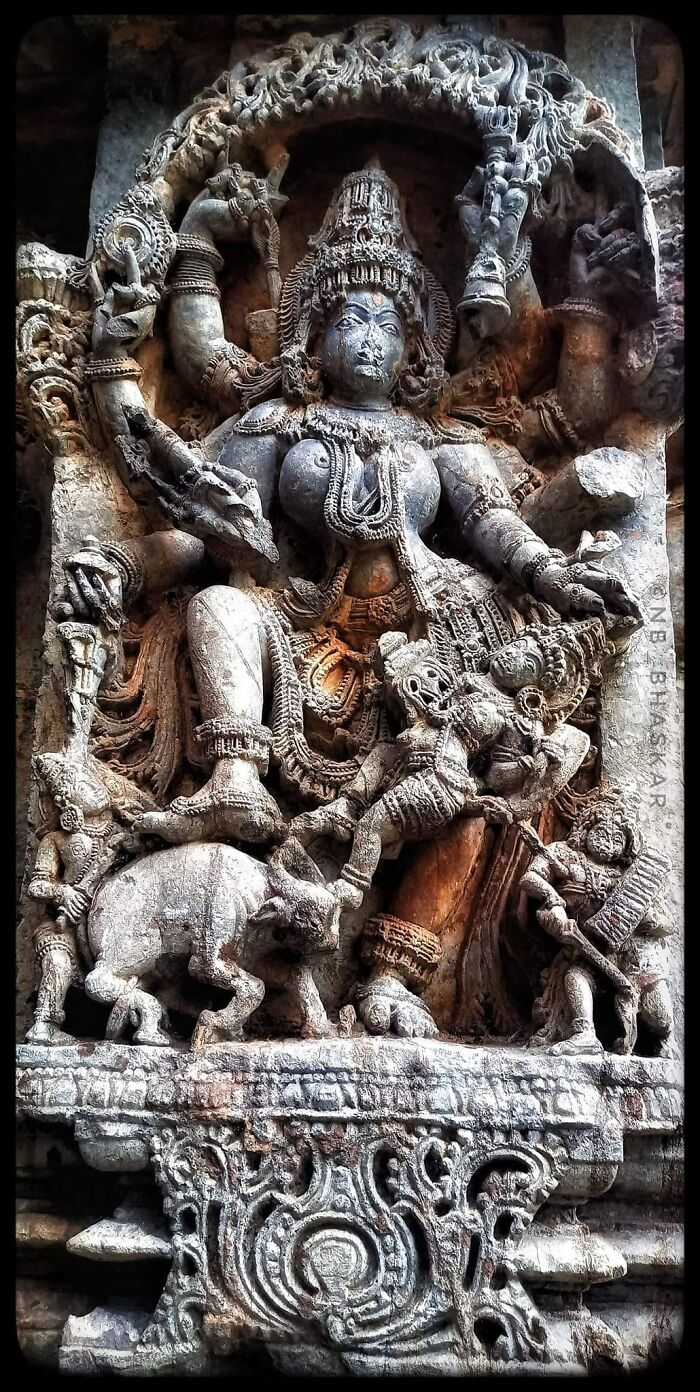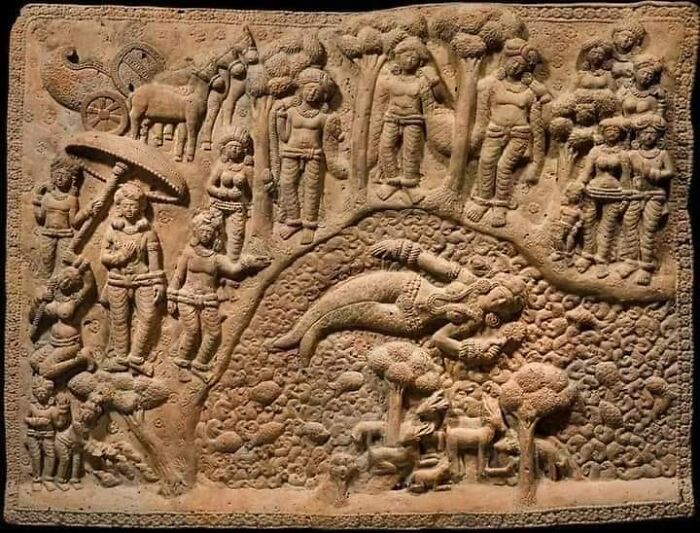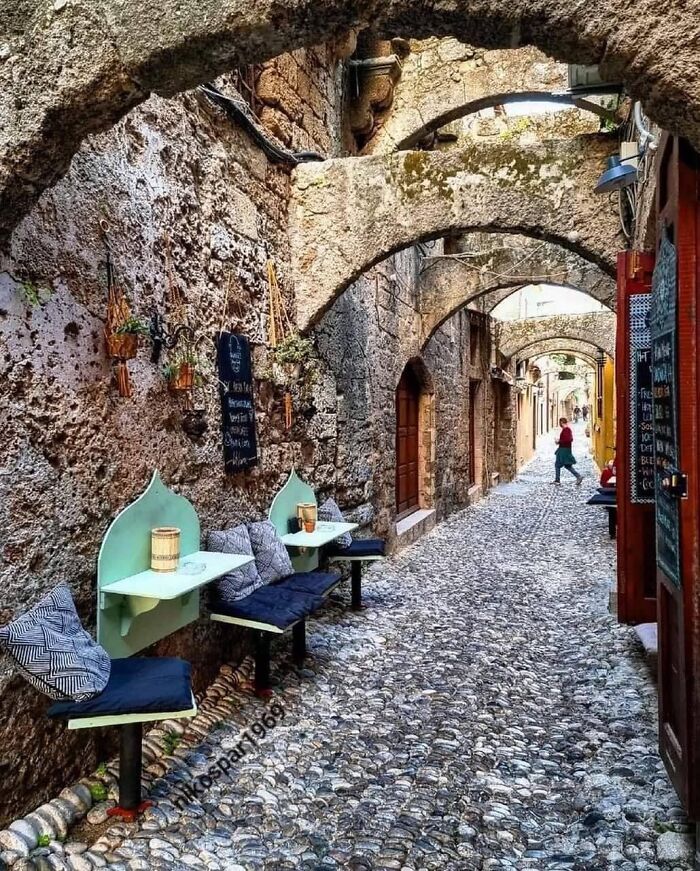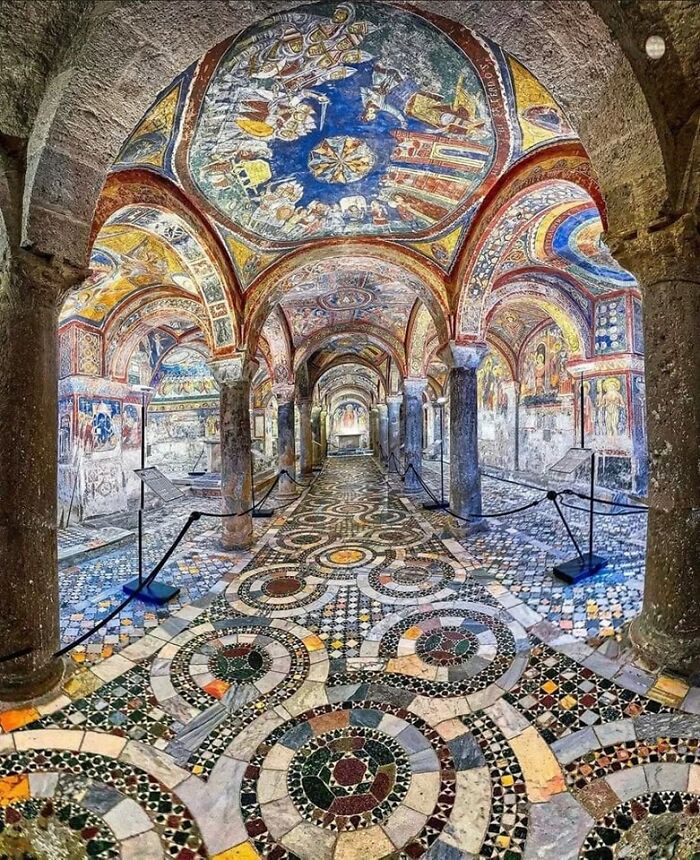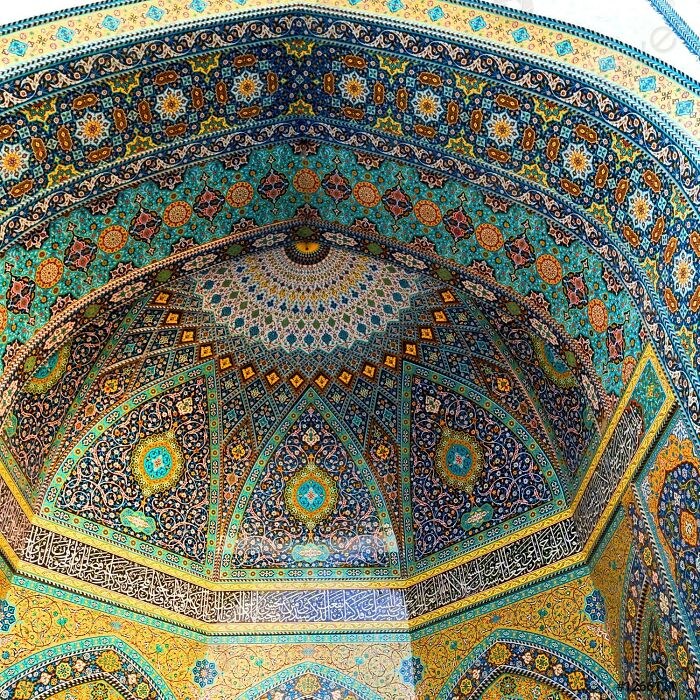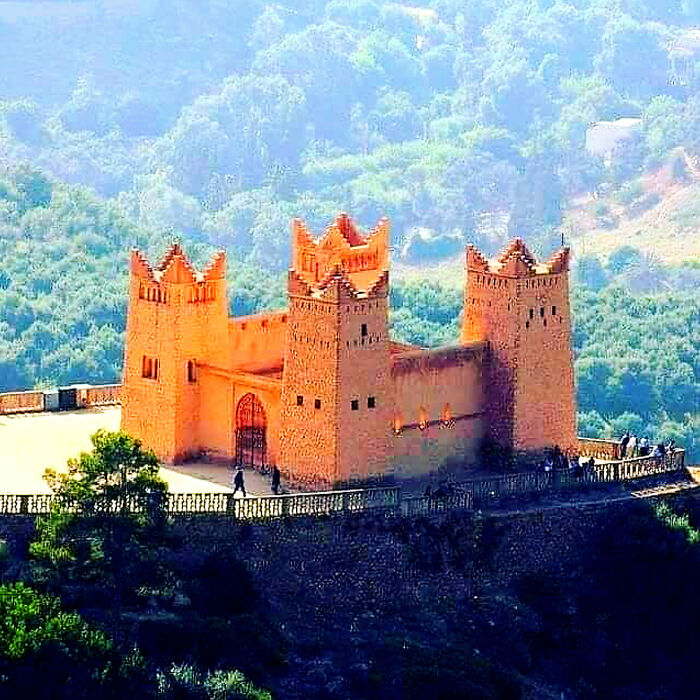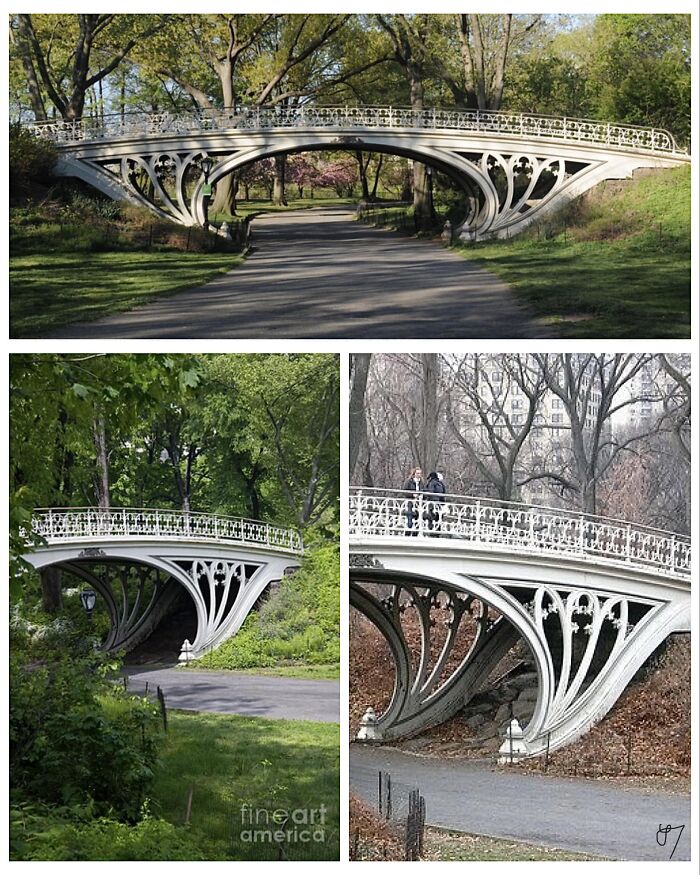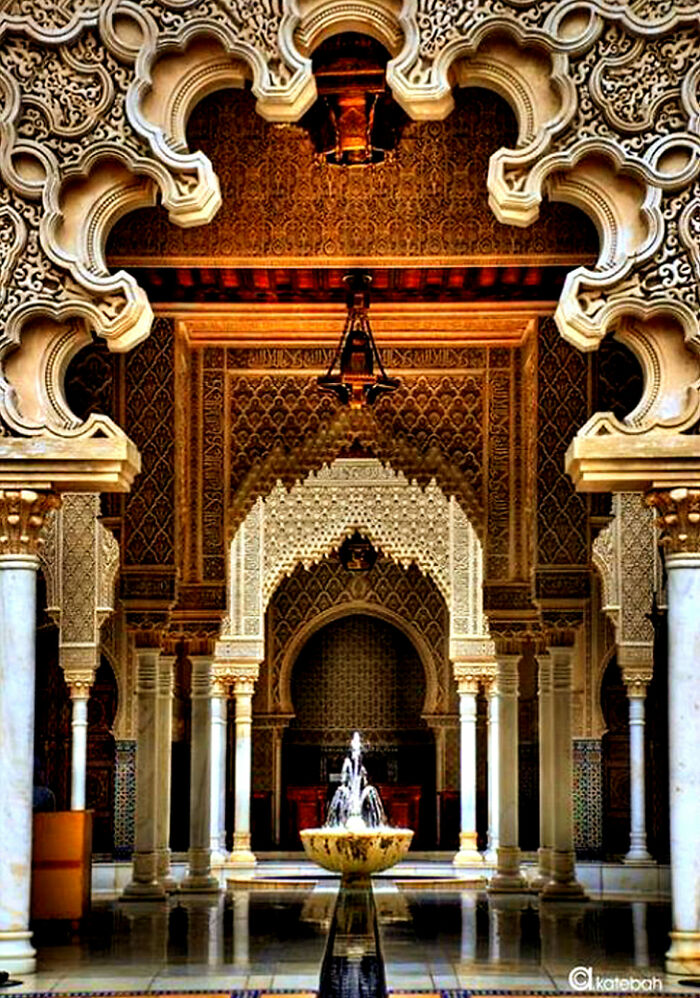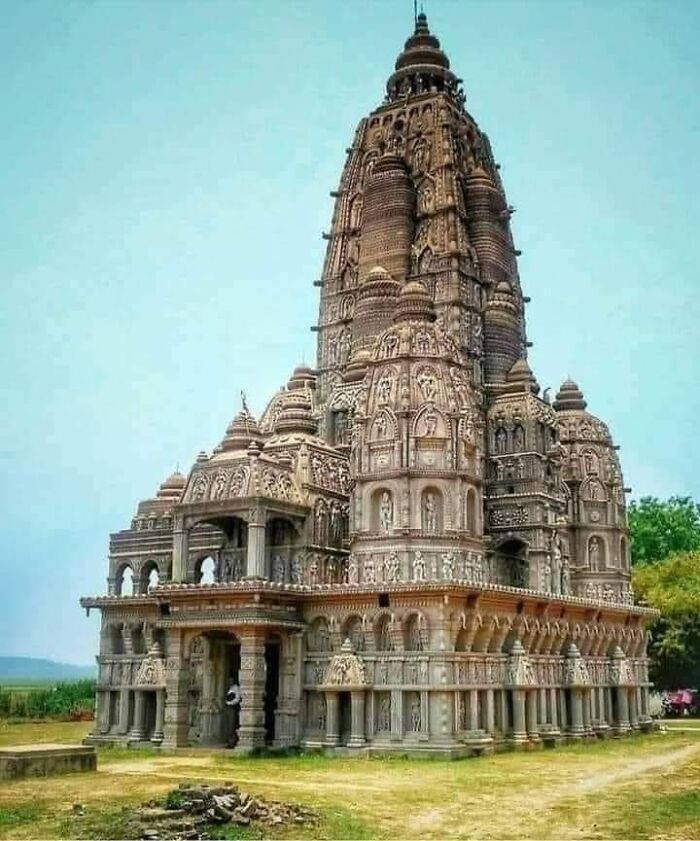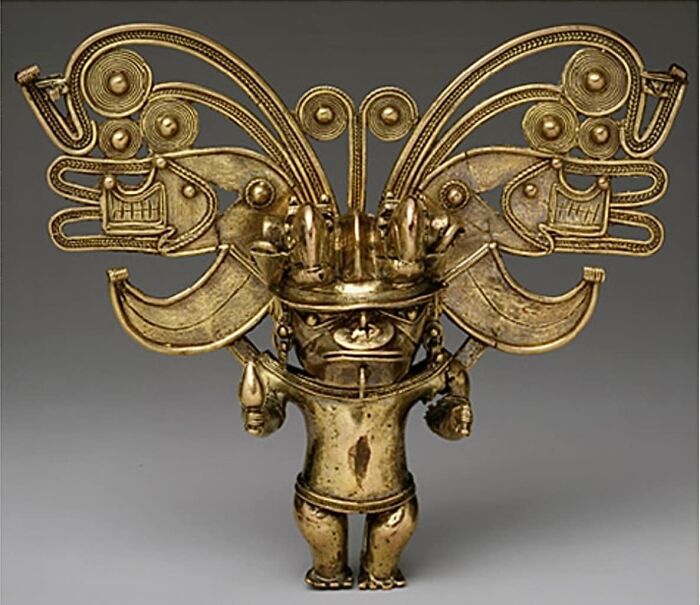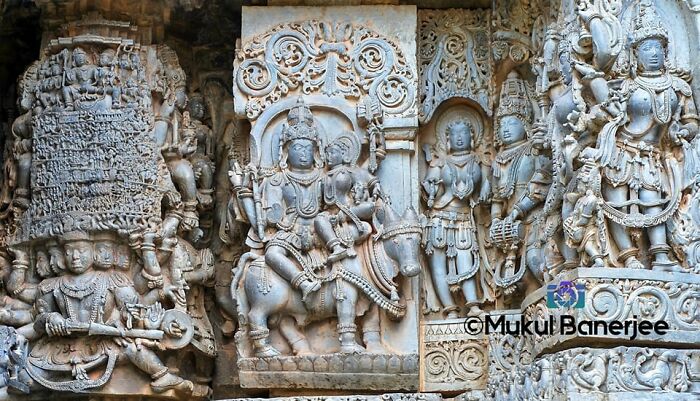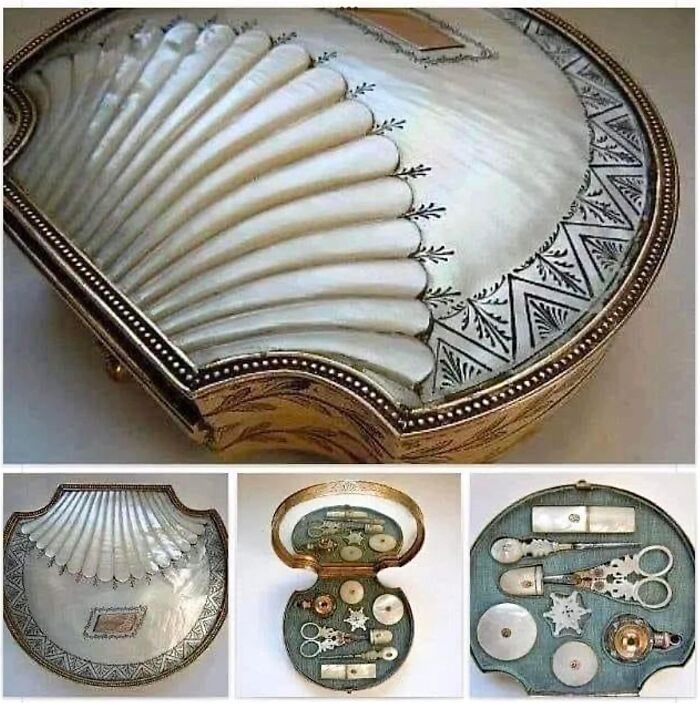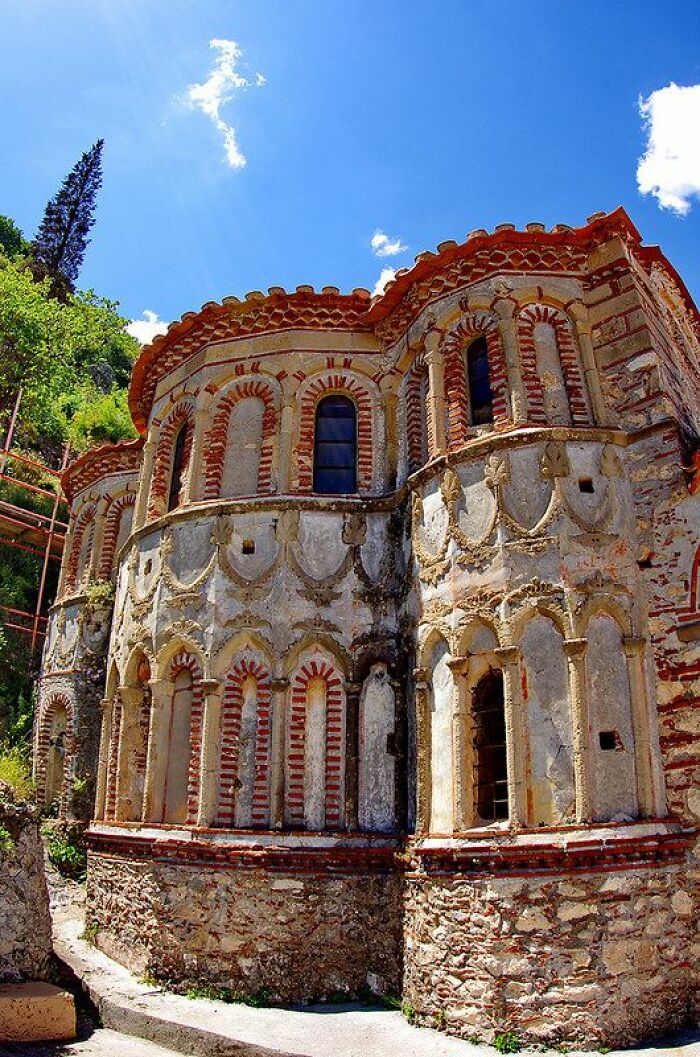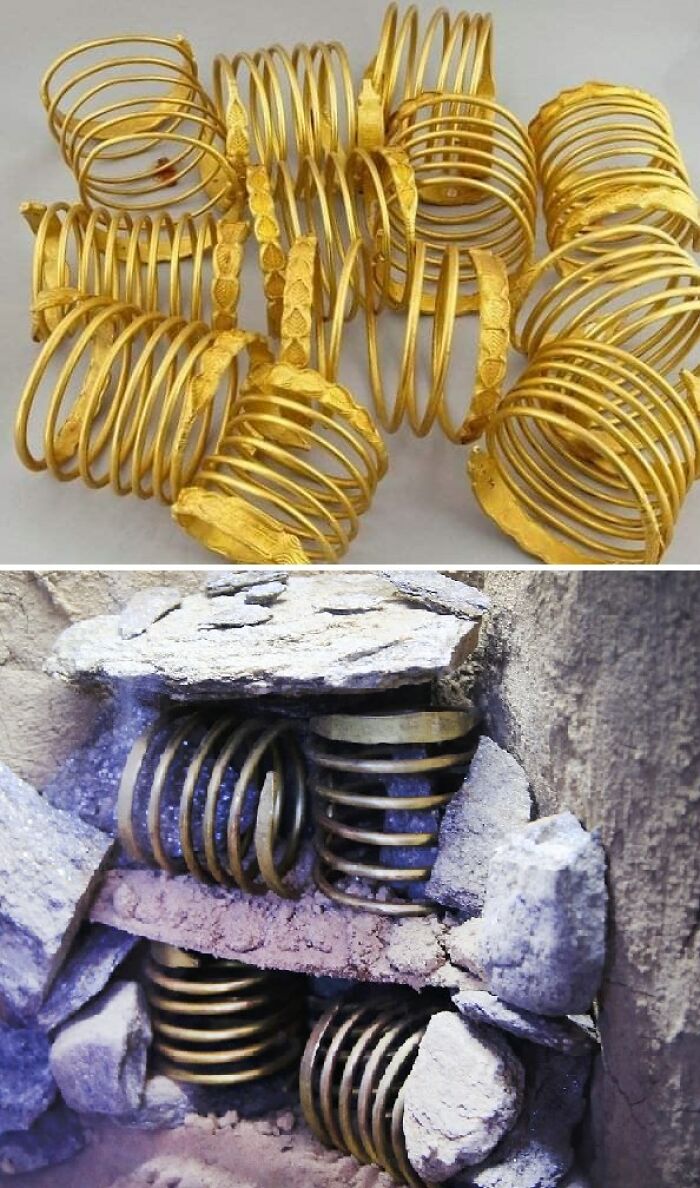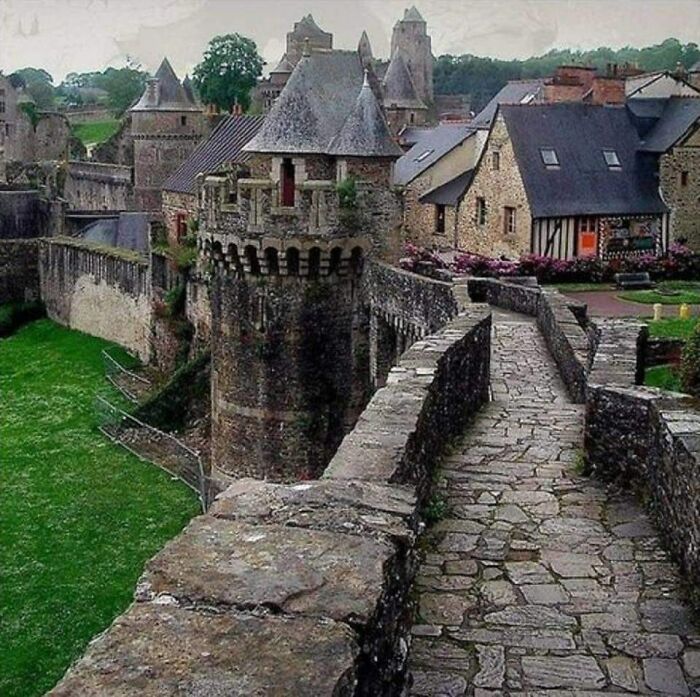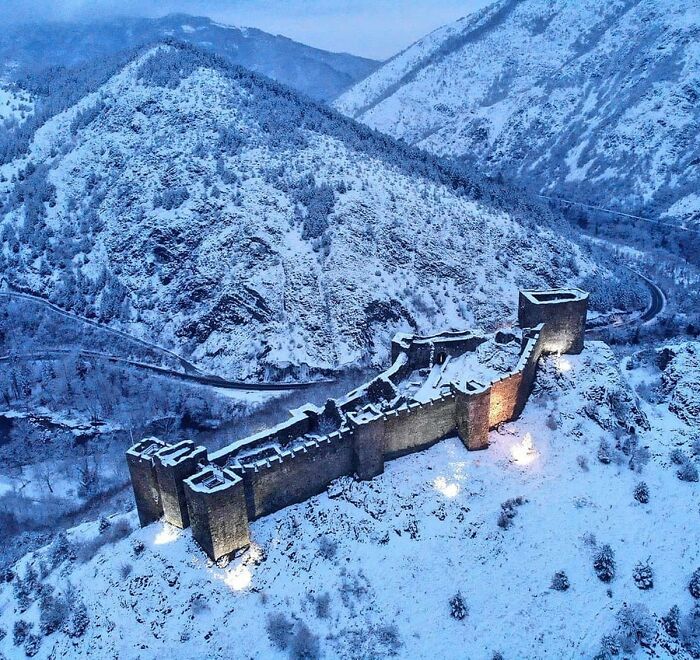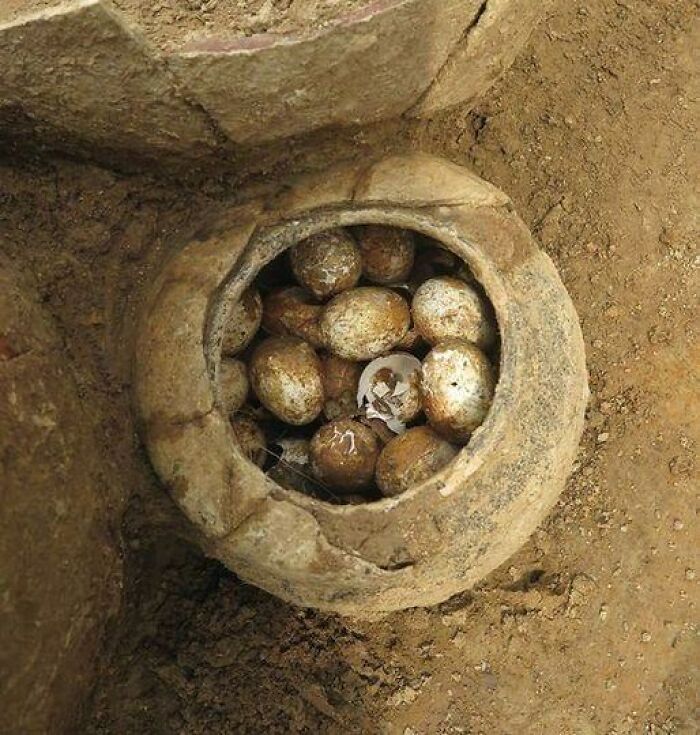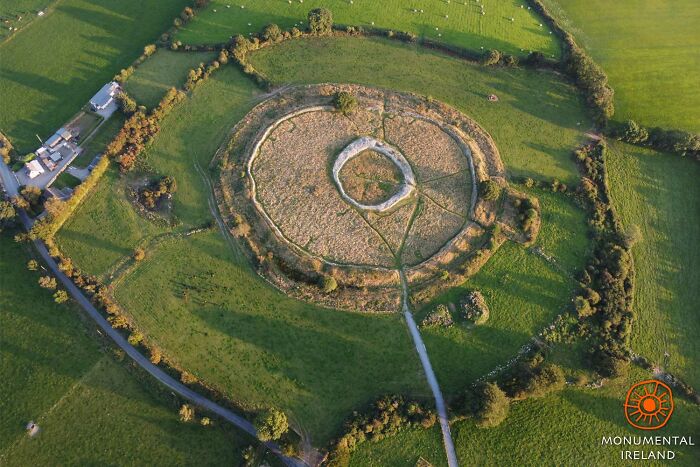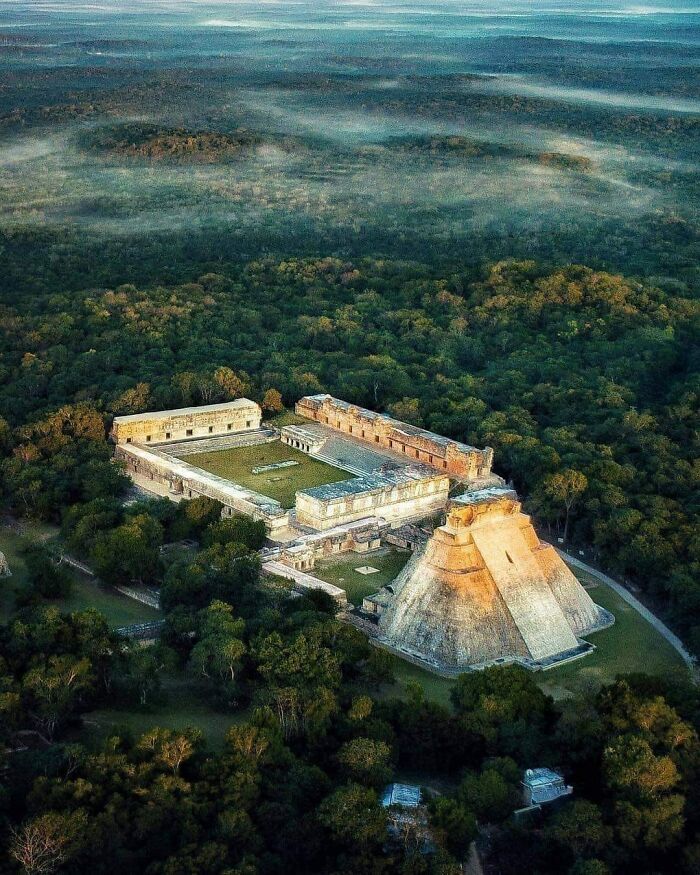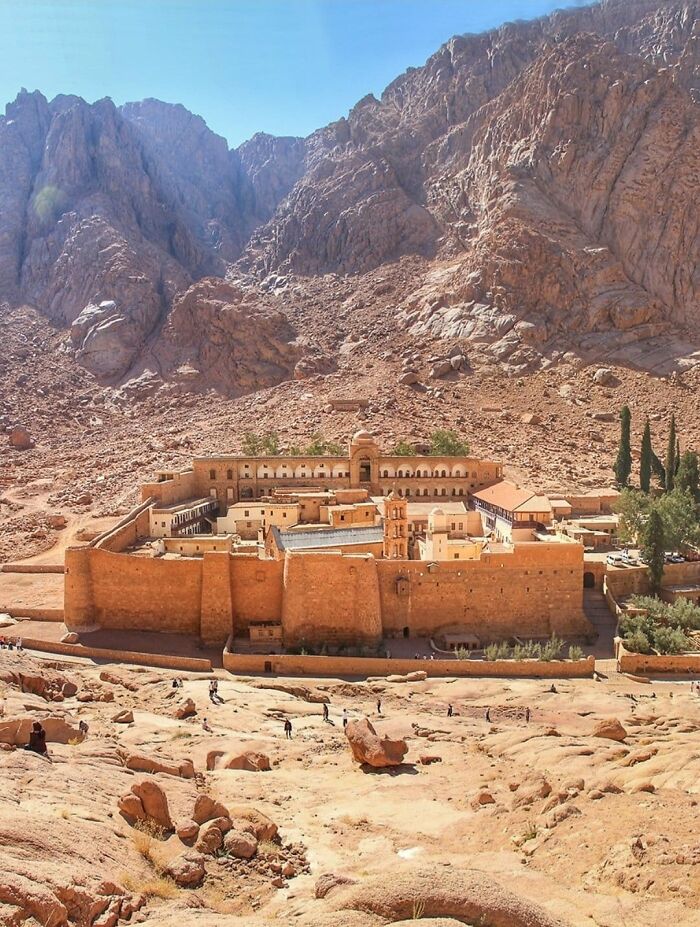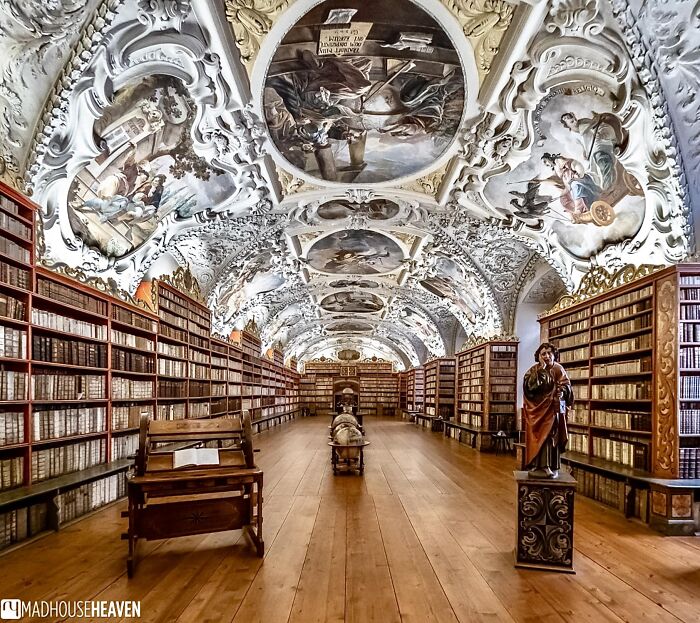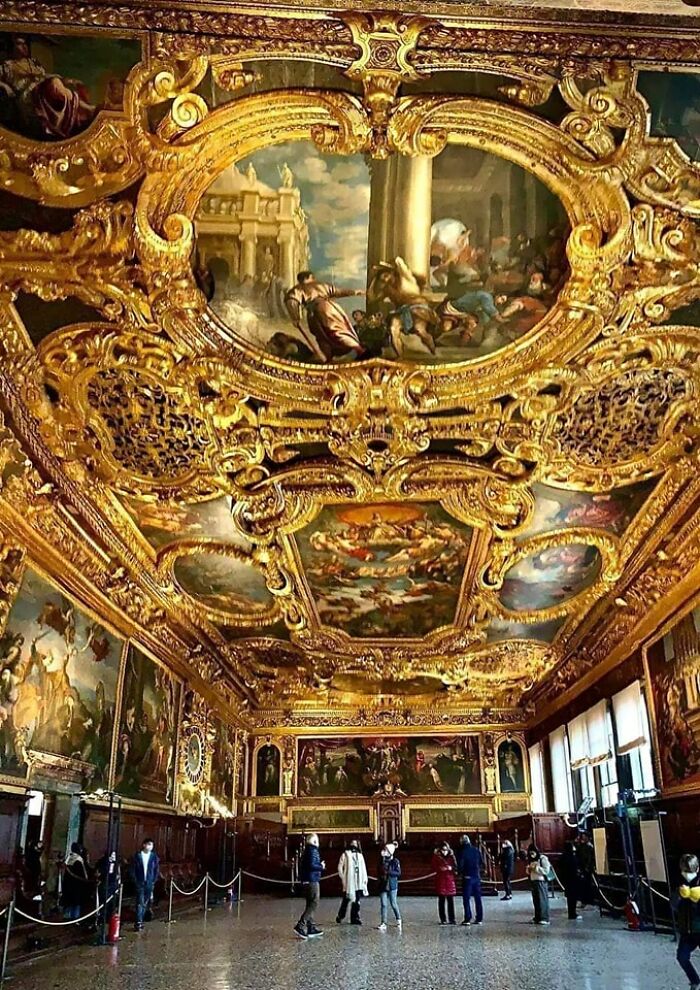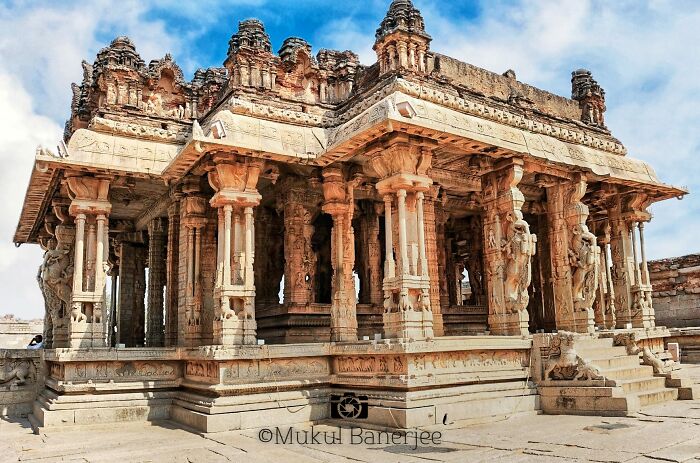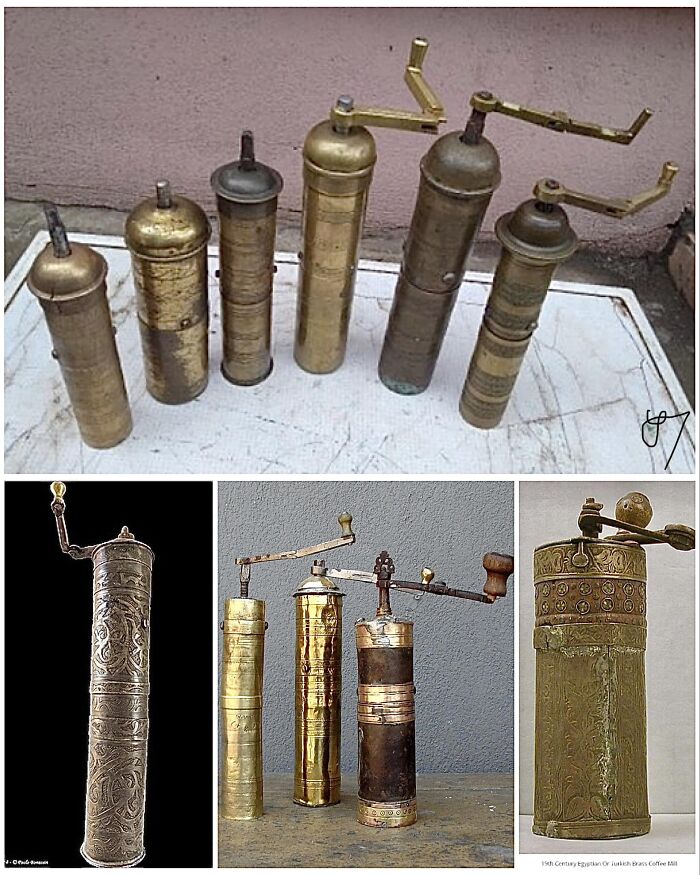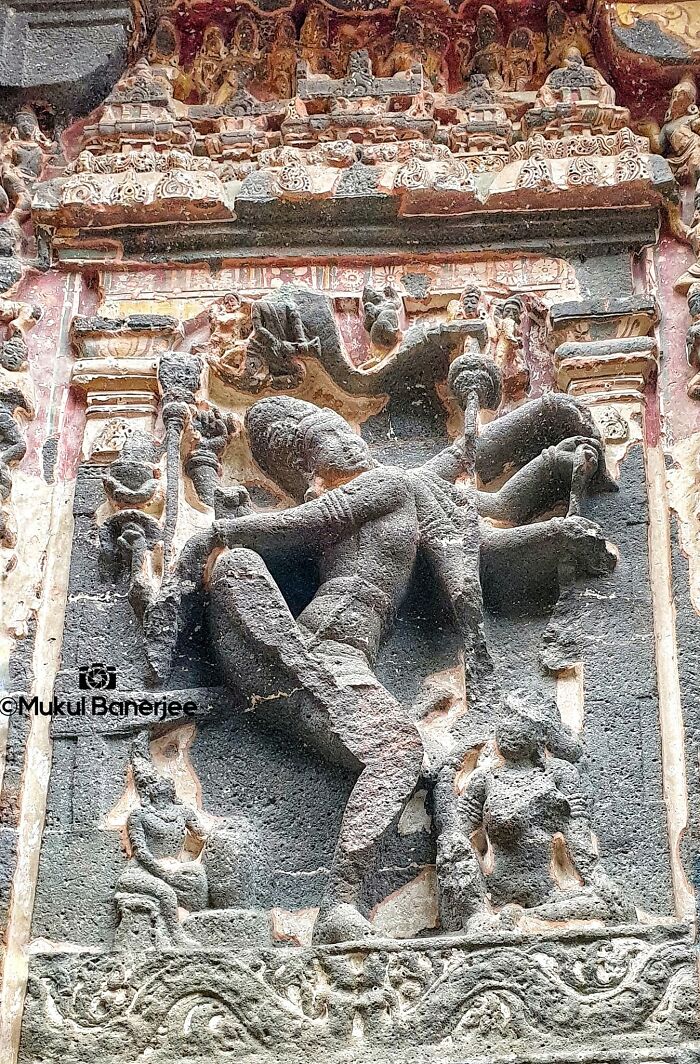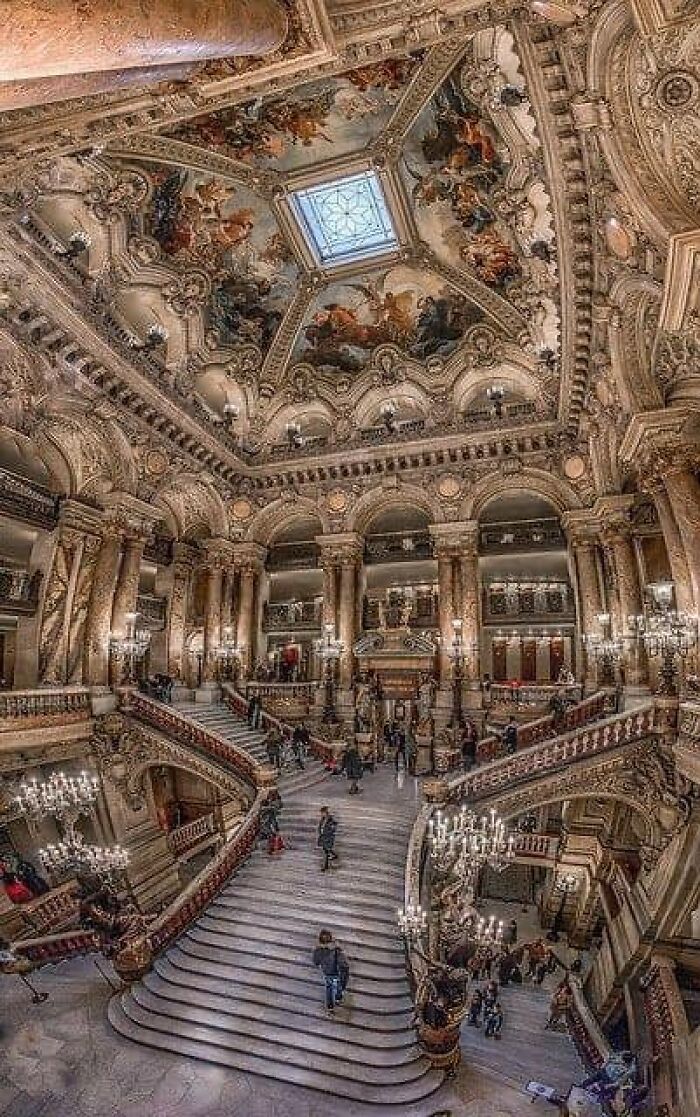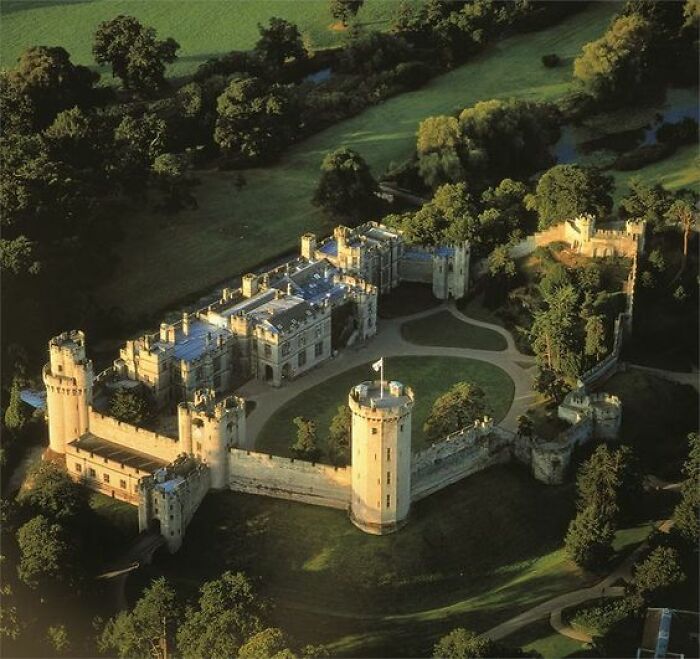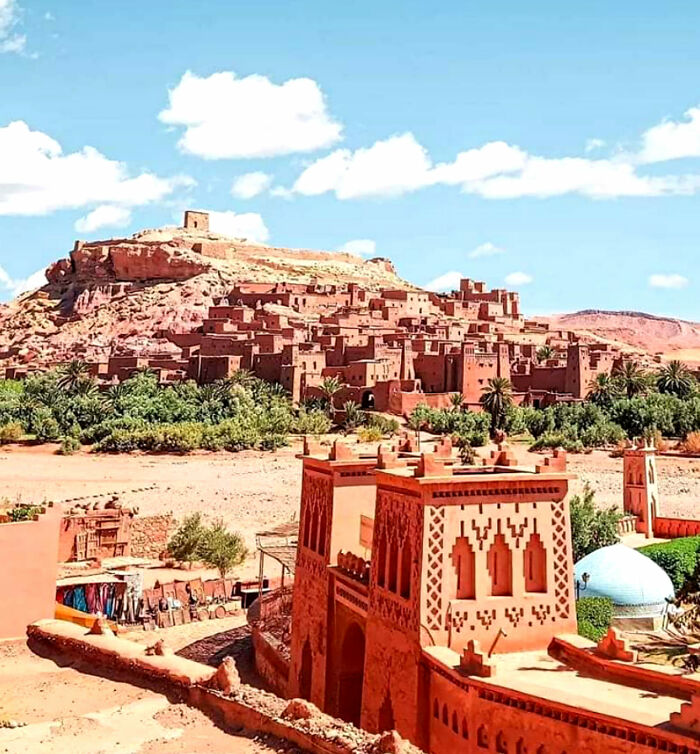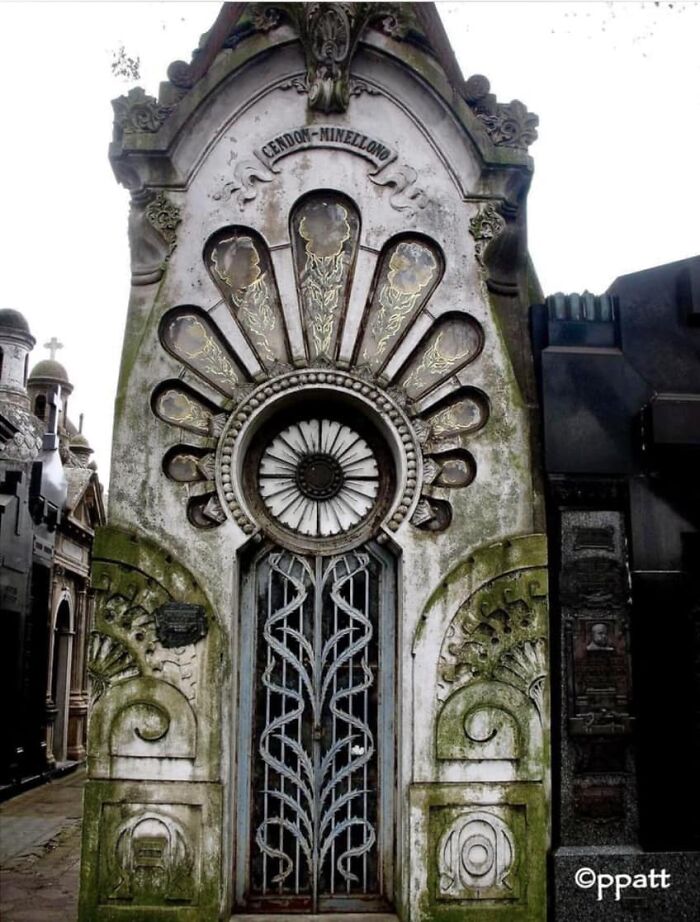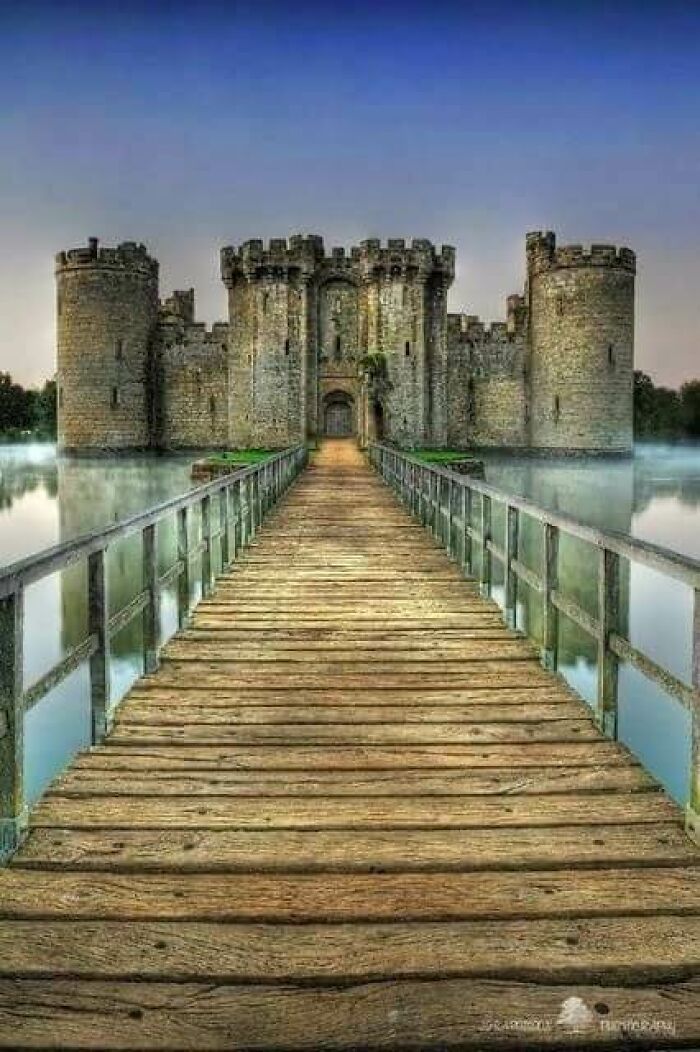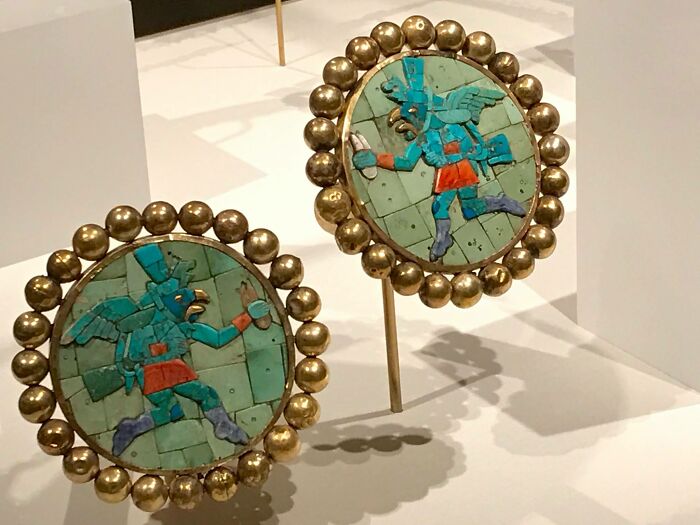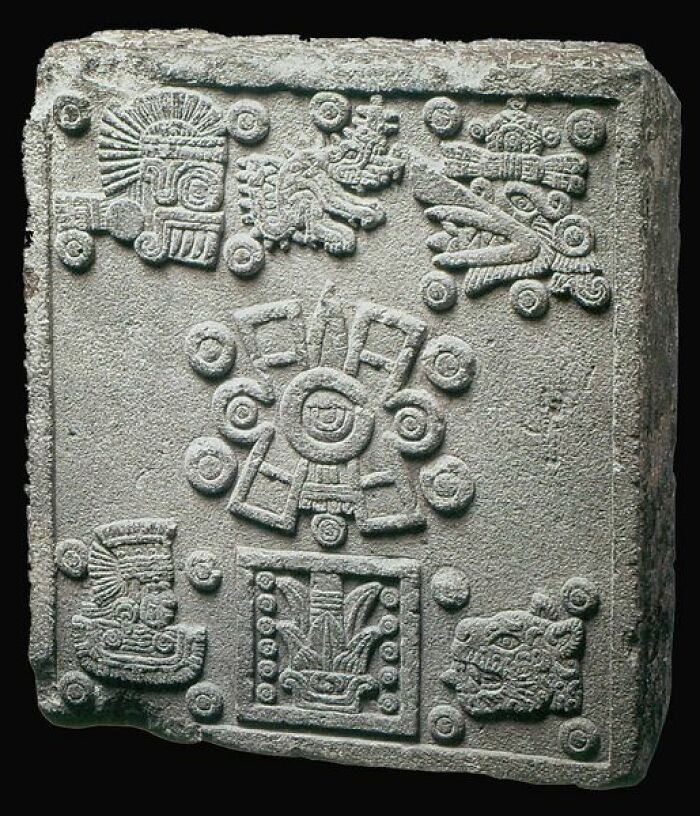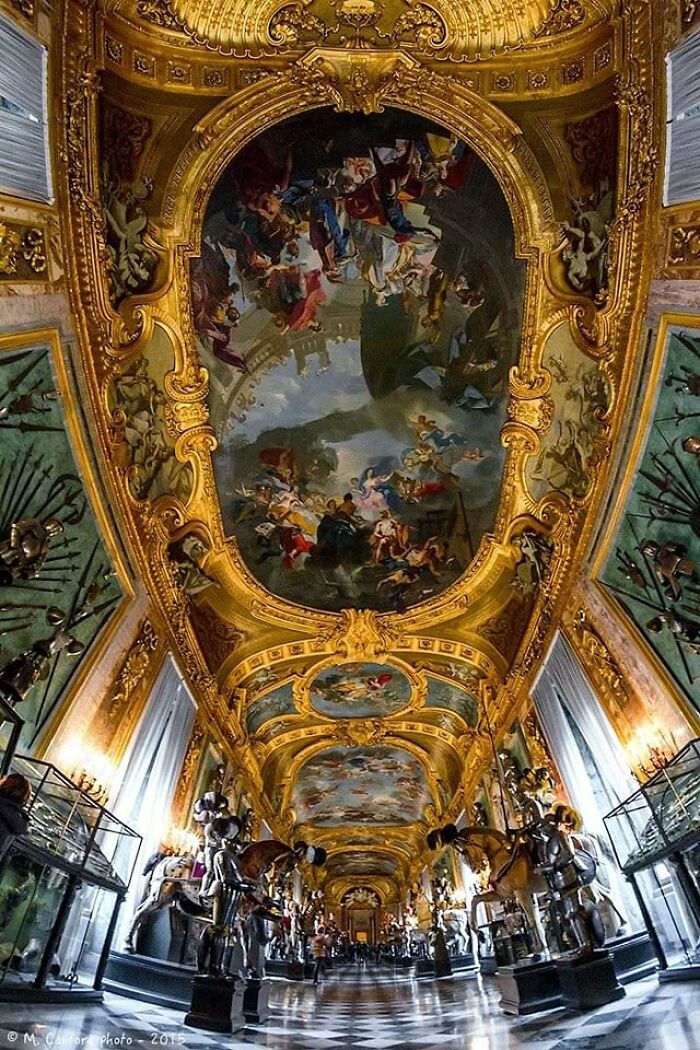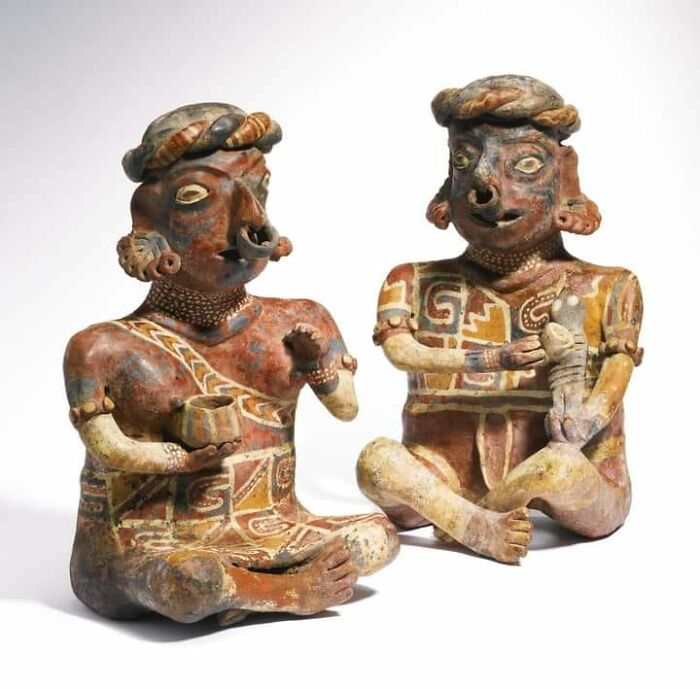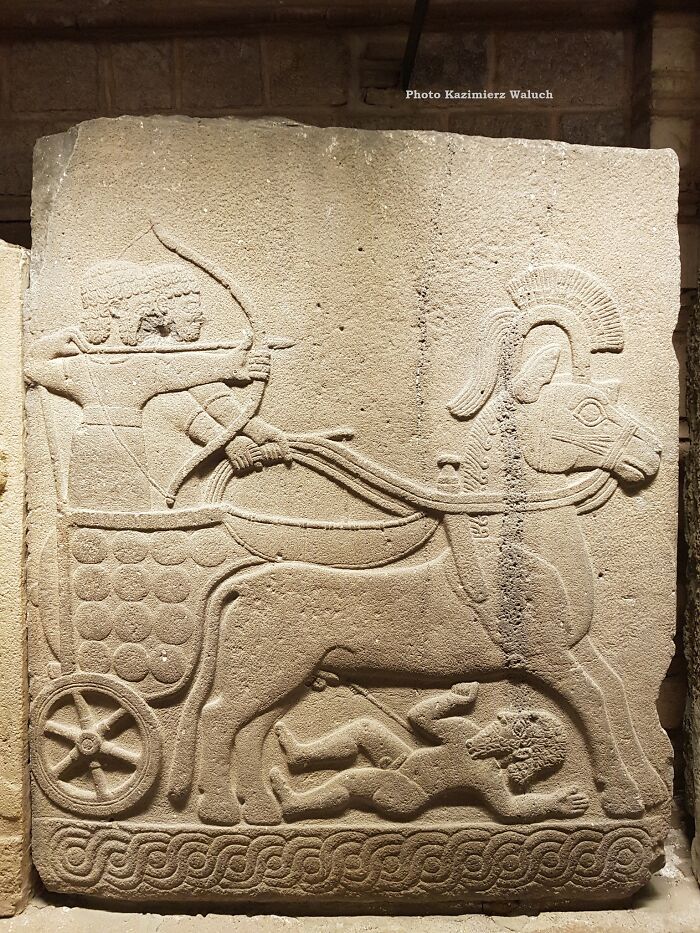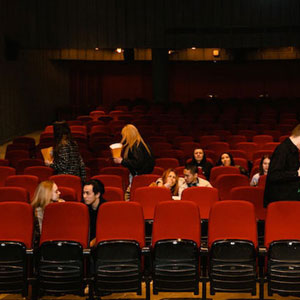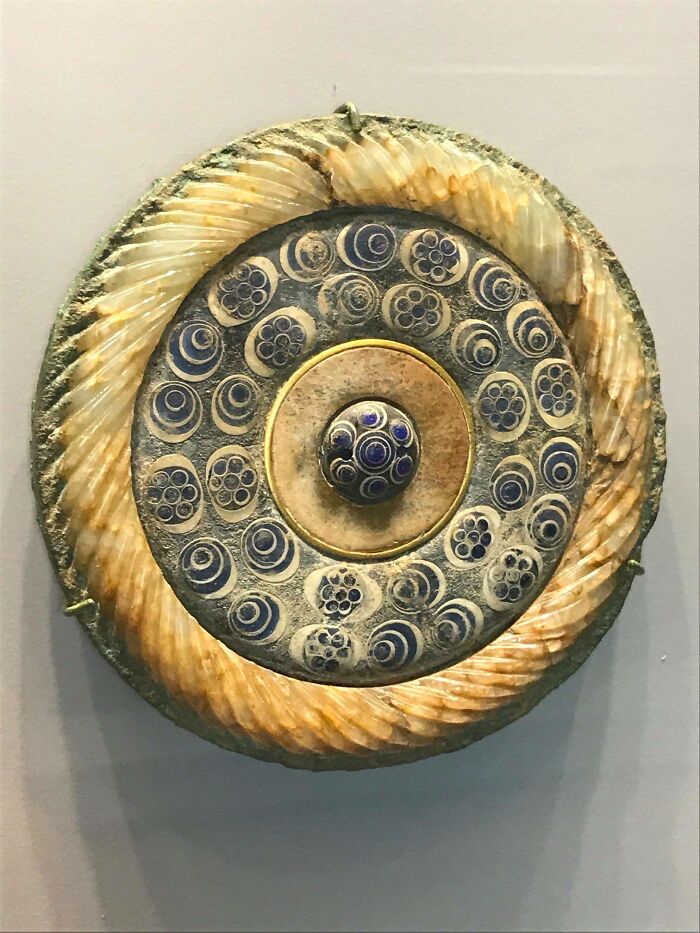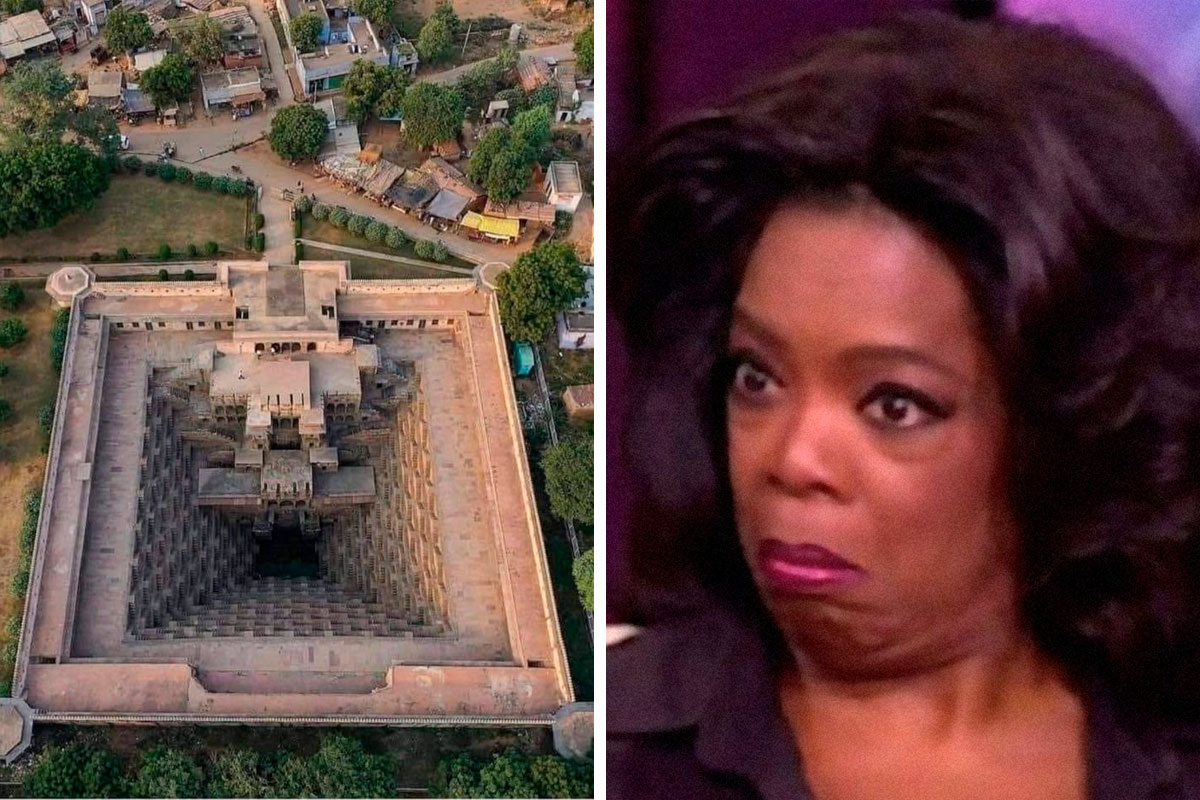
50 Of The Most Fascinating Creations Of Archaeology, Art And Architecture That Continue To Inspire Us Centuries Later
Throughout our time on Earth, we humans have created some pretty cool stuff. However, since all of it can't possibly fit into our curriculum, most of us miss out on a lot of our heritage.
Luckily, those who want to catch up can come together on the internet and share with each other the discoveries they unearth. And the Facebook group 'Ancient Wonders of Archaeology, Art History & Architecture' is an excellent example of that.
Created in 2013, it now unites 562K members who have amassed quite a collection. So we figured it would be nice to dig through their most impressive finds. Continue scrolling to check out what we stumbled upon.
More info: Facebook
This post may include affiliate links.
Gloucester Cathedral - An English Cathedral Of The 11th Century, It Is One Of The Masterpieces Of Gothic Architecture Around The World...
I always wonder how many people had to live poor to make this possible.
Kailasa Temple In Ellora, Maharashtra, India, Is The World’s Largest Monolithic Piece Of Art
Master craftspeople carved the gigantic structure from a single piece of solid rock in a cave on a mountainside. The entire building took more than two decades to carve.
Even After 1000 Years, The Ancient Persian Vertical-Axis Windmills Are Still Operational Today
The Prague Astronomical Clock, The Medieval Clock Was Installed In 1410 And Is Considered To Be The Oldest Operating Astronomical Clock In The World
A Bookshelf In The Abbey Of Waldsassen In Bavaria,germany
Built In The Abhaneri Village Of Rajasthan, India, It Is More 1,000 Years Old And Is 100 Feet Deep With 13 Floors And 3,500 Symmetrically Placed Thin Steps!
One of the biggest and most stunning stepwells in the entire world is the Chand Baori.
How is it possible without understanding of geometry, mathematics, physics, and engineering?
Why do present time people think everyone in the past was stupid?????
The Ark (Узб. Ark, Перс. ارگ بخارا) Of Bukhara Is A Massive Fortress Located In The City Of Bukhara, Uzbekistan . 5 -20 Centuries
This Enormous Underground City That Once Housed 20,000 People Was Accidentally Discovered By A Man After Knocking Down A Wall In His Basement
When archaeologists later arrived to the site, they revealed that the city was 18 stories deep and had everything needed for underground life, including schools, chapels, and even stables.
Castle Runkelstein/Roncolo Dates Back To The 13th Century
Upper Lausitzian Library Of Sciences, 1779, Gorlitz, Germany
It is the region’s most important library containing about 150,000 volumes, making it the largest library in Görlitz and the region, revered for promoting knowledge sharing between Germany, Poland and the Czech Republic.
Templo De Los Guerreros, Chichén Itzá
The statue in the front? Looks like a dude leaning back, just chilling? Yeah, that's where the sacrifices happened.
This Building, Known As The Treasury Is One Of A Series Of Buildings In Petra That Was Built By The Nabateans Who Followed A Pagan Religion And Were Closely Linked To The People Of Thamud. They Were Renowned For Their Elaborate Skill Of Carving Into Rocks
Chepstow Castle Sits Atop A Cliff Across The River Wye Which Separates England And Wales
Mycenaean Bronze Daggers, Inlaid With Gold And Silver. 16th Century Bc
If I owned any of these, I would never use them for fear or ruining the gorgeous designs. Look at them!! Beautiful!
Bird Perfume Bottle With Stopper, 1880-1890
Royal Ontario Museum, Toronto
Divers Shining Lights On A Head Of Serapis, Found In The Sunken Egyptian Coastal Town Of Canopus
The full statue was once over 4 metres tall and dates to circa 200 B.C.
Terrace Houses In Ephesus
The Spanish Synagogue Is The Most Recent Synagogue In The Prague Jewish Town
Built in 1868 for the local Reform congregation on the site of the 12th-century Altschul, which was the oldest synagogue in the Prague ghetto.
It was called the Spanish Synagogue for its impressive Moorish interior design, influenced by the famous Alhambra. The building was designed by Josef Niklas and Jan Bělský, the remarkable interior (from 1882–83) by Antonín Baum and Bedřich Münzberger.
What people forget is the Altschul was demolished in 1867 (a grand Gothic architecture synagogue built in 1270, that was the grandest ancient synogogue in all of Europe). The majority of the Jewish community opposed the demolition of the old house of worship, but the Reform minority who had control of it since the 1820's (due to Francis I, Emperor of Austria, favoring Reform over the larger Orthodox, and gave the Reform leaders the power to seize Orthodox houses of worship and force them to go Reform, shut down ritual bathouses, etc. Reform Judaism's early days were a very persecutory movement). They basically destroyed a 600 year old grand house of worship that was an architectural marvel for a more modern structure. Official reason was the old place was too small for worship, the real reason was part of their "De-Orthodoxying" campaign as part of their war against Orthodox Judaism at the time.
Margravial Opera House. Bayreuth, Germany
The Margravial Opera House, one of the masterpieces of Baroque theater architecture, built between 1745 and 1750 Commissioned by Margravine Wilhelmine, wife of Frederick, Margrave of Brandenburg Bayreuth, it was designed by the famous theater architect Giuseppe Galli Bibiena.
Bodiam Castle, England
I’ve been here! To get there, you can go on a steam train too! Also, anyone remember the kids tv show Knightmare? The exterior shots were filmed here!
El Mosaico Antiguo Intacto Más Grande Del Mundo- Antakya-Turquía
A Fayum Portrait Of A Little Girl From Hawara, Egypt, 1st Century Bc. Discovered With The Mummy Of Demos, Who May Have Been The Child's Mother. Egyptian Museum, Cairo
The Algerian City Of Sivar.. The Eighth Wonder Of The World
The oldest civilization in the world
The city of Sivar, also called the city of mystery and the eighth wonder of the world, is located in the "Tassili N'Ajer" series in the middle of the Djanet desert, southeastern Algeria.
The largest open-air museum includes drawings and engravings dating back more than 15,000 years, representing the oldest civilization in the world and is registered with UNESCO.
Leadenhall Market, 14th Century, Gracechurch Street, London, UK
It is a covered market and one of the oldest markets in London, located in the historic centre of the City of London financial district.
The Grottoes And Niches Of Longmen Contain The Largest And Most Impressive Collection Of Chinese Art Of The Late Northern Wei And Tang Dynasties (316-907)
These works, entirely devoted to the Buddhist religion, represent the high point of Chinese stone carving.
Hajmasker Castle Hungary, Abandoned
The Celsus Library, Ephesus
This is one of the most beautiful structures in Ephesus. It was built in 117 A.D. to store about 12,000 scrolls and to serve as a mausoleum for Tiberius Julius Celsus Polemaeanus (Roman proconsul of Ephesus).
The scrolls of the manuscripts were kept in cupboards in niches on the walls.There were double walls behind the bookcases to prevent them from the extremes of temperature and humidity.
The capacity of the library was more than 12,000 scrolls. It was the third richest library in ancient times after the Alexandria and Pergamum.
The facade of the library has two levels , with Corinthian style columns on the ground floor and three entrances to the building. There is three windows openings in the upper floor.
The statues in the niches of the columns today are the copies of the originals. The statues symbolize wisdom (Sophia), knowledge (Episteme), intelligence (Ennoia) and valor (Arete).
The interior of the library was destroyed, supposedly by an earthquake in 262 A.D., (though other evidence points to a fire during a Gothic invasion in that same year).
Architecture Of Sun Temple
The shrine proper of the Sun Temple was built during the reign of Bhima I of Chaulukya dynasty.[A][1][2][3][4] Earlier, during 1024–1025, Mahmud of Ghazni had invaded Bhima's kingdom, and a force of around 20,000 soldiers had unsuccessfully tried to check his advance at Modhera. Historian A. K. Majumdar theorizes that the Sun Temple might have been built to commemorate this defense.[5] On a block in western wall of cella, there is an inscription "Vikram Samvat 1083" upside down carelessly incised in Devnagari script which correspond to 1026-1027 CE. No other date is found. As the inscription is upside down, it evidences the destruction and reconstruction of the cella.
Load More Replies...Thank you Google Lens https://en.m.wikipedia.org/wiki/Sun_Temple,_Modhera
The Koutoubia Mosque Is A Cultural, Religious And Symbolic Landmark For Marrakesh And The Kingdom Of Morocco
The mosque was first built in 1147 during the reign of the Almohad caliph Abd al-Mumin, who completely rebuilt it in the year 1158. As for the minaret, its construction was completed in 1195 during the reign of the Almohad caliph Yaqub al-Mansur. The mosque was registered in the UNESCO World Heritage List in 1985, as part of the city of Marrakesh
Part Of The Aphrodite Statue Re-Emerges After More Than Two Millennia In The Ancient City Of Aizanoi, Greece
Modern Symbolism. Old religions are re-emerging from suffocating oppression.
Athens, Greece A Caryatid Is A Sculpted Female Sculptural Figure Used As A Pillar, Serving As An Architectural Support. The Greek Term Karyatides Literally Comes From An Ancient Town In The Peloponnese, Meaning "Daughters Of Karyai"
Box Mirror With Head Of Athena (Lid), Greece 330–270 Bc
Fossilized Footprints Found In White Sands National Park
A multidisciplinary team of scientists recently announced the discovery of the oldest human footprints in North America. These fossilized prints were made between 23,000 and 21,000 years ago along the shores of an ice age lake that once filled the Tularosa Basin in south-central New Mexico, in what is now White Sands National Park. This finding fundamentally changes the timeline on North American human habitation – turning back the clock of human arrival in the Americas nearly 10,000 years. The footprints were formed when ancient peoples walked over damp, sandy ground surrounding the former lake. Over time, sediment filled in the footprints as the ground hardened fossilizing the prints. Recently, erosion has resurfaced the prints, making many of them visible to the naked eye. By testing the sediment, researchers were able to carbon date the prints, with the oldest set being 22,800 years old.
Predjama Castle - Mysterious Castle In Guinness Book
Predjama Castle was built in the middle of a rocky cliff 120 meters or 400 meters high 800 years ago. The castle is partially built in a natural cave and is connected to the cave system...
A Three-Fold Bed Found In Tutankhamun’s Tomb In The Valley Of The Kings, Luxor, Egypt. It’s Believed To Be The First Of Its Kind, And Highly Sophisticated For Its Time. The Bed Folded Up Into A Z-Shape, Making It Compact And Easy To Transport
Statue Of Athene (“The Peiraeus Athena”). Medium: Bronze. Date: 340—330 Bce. Athens, Archaeological Museum Of Piraeus
The Norias Of Hama Are A Group Of Large Water Wheels Located Along The Orontes River In The City Of Hama, Syria
These wheels are also known as "Hama wheels" or "Hama Norias" and are considered to be one of the most impressive examples of traditional water-raising technology.
The Norias of Hama were constructed during the medieval period, likely in the 14th or 15th century, although some estimates suggest they may be even older. The wheels were used to lift water from the river to nearby aqueducts and irrigation systems, which were used to water crops and provide drinking water for the people of Hama.
Northern Gate To The Bayon Temple Complex, With 4 Giant Faces. Cambodia, Khmer Empire, 12th-13th Century
Tiger's Nest Monastery, Also Known As Paro Taktsang, Is A Sacred Buddhist Site Located In The Cliffside Of The Paro Valley In Bhutan
It consists of four temples, interconnected by staircases and bridges, perched on the cliffside over 3,000 meters (10,000 feet) above sea level. The buildings are adorned with intricate carvings and paintings that depict Buddhist teachings and deities.
Tribal Chief Eli Mabel Holds The Body Of His Ancestor, Agat Mamete Mabel. Agat Mamete Mabel, Was A Tribal Chief Who Ruled A Remote Village In Papua, Indonesia Some 250 Years Ago
Honored after death with a custom reserved only for important elders and local heroes among the Dani people. It is embalmed and preserved with smoke and animal oils.
Wazir Khan Mosque (Masjid) In Lahore City Of Punjab Province
An Incredible 4,500 Year Old (!) Ancient Egyptian Tunic. The Egyptian Museum, Cairo
St Mark's Basilica, Venice / Completed In 11th Century
A 12th Century Ce; Bayon Temple, One Of More Famous, Popular And Beautiful Of Structures In Angkor Wat Archaeological Park, Cambodia
Wadi Rum Is A Desert Valley Located In The Southern Part Of Jordan
It is also known as the Valley of the Moon due to its unique landscape of red sandstone and granite rock formations that resemble a lunar surface. It has been inhabited by various civilizations throughout history, including the Nabataeans, who built the famous city of Petra.
Rani-Ki-Vav, On The Banks Of The Saraswati River, Was Initially Built As A Memorial To A King In The 11th Century Ad
Stepwells are a distinctive form of subterranean water resource and storage systems on the Indian subcontinent, and have been constructed since the 3rd millennium BC. They evolved over time from what was basically a pit in sandy soil towards elaborate multi-storey works of art and architecture. Rani-ki-Vav was built at the height of craftsmens’ ability in stepwell construction and the Maru-Gurjara architectural style, reflecting mastery of this complex technique and great beauty of detail and proportions. Designed as an inverted temple highlighting the sanctity of water, it is divided into seven levels of stairs with sculptural panels of high artistic quality; more than 500 principle sculptures and over a thousand minor ones combine religious, mythological and secular imagery, often referencing literary works.
The Medieval Church Of St Mary's Stands In The Centre Of Barnard Castle, A Few Steps From The Iconic Market Cross That Is The Signature Building Of This Attractive Market Town In Upper Teesdale
St Mary's was founded around the year AD 1130 by Bernard de Balliol, who rebuilt the nearby castle begun by his father.
"Mahishasura Mardini". 12th Century Kedareshwara Temple Halebidu
About 2000-2200 Years Old Sculpture Of Mermaid Material : Terracotta West Bengal Bharat (India)
Chinese 700 Years Old Chang Kong Cliff Hiking Path
The Cliff road is believed to have been created in the 13th century, during the Yuan Dynasty, by followers of He Zhizhen, the first master of the Mount Hua Sect of Taoism...
The Medieval Alley In Rhodes Is A Narrow Street Located In The Old Town Of Rhodes, A Unesco World Heritage Site In Greece
The Old Town is enclosed within medieval walls and is considered one of the best-preserved medieval towns in Europe.
𝘛𝘩𝘦 𝘊𝘳𝘺𝘱𝘵 𝘰𝘧 𝘚𝘢𝘯 𝘔𝘢𝘨𝘯𝘰, 𝘈𝘯𝘢𝘨𝘯𝘪, 𝘐𝘵𝘢𝘭𝘺. 𝘈𝘭𝘴𝘰 𝘬𝘯𝘰𝘸𝘯 𝘢𝘴 𝘵𝘩𝘦 𝘊𝘪𝘵𝘺 𝘰𝘧 𝘗𝘰𝘱𝘦𝘴 (𝘧𝘰𝘶𝘳 𝘗𝘰𝘱𝘦𝘴 𝘩𝘢𝘪𝘭𝘦𝘥 𝘧𝘳𝘰𝘮 𝘵𝘰𝘸𝘯), 𝘈𝘯𝘢𝘨𝘯𝘪 𝘪𝘴 𝘤𝘳𝘰𝘸𝘯𝘦𝘥 𝘣𝘺 𝘪𝘵𝘴 𝘣𝘦𝘢𝘶𝘵𝘪𝘧𝘶𝘭 𝘙𝘰𝘮𝘢𝘯𝘦𝘴𝘲𝘶𝘦 𝘤𝘢𝘵𝘩𝘦𝘥𝘳𝘢𝘭 𝘥𝘢𝘵𝘪𝘯𝘨 𝘣𝘢𝘤𝘬 𝘵𝘰 𝘵𝘶𝘳𝘯 𝘰𝘧 11𝘵𝘩 𝘢𝘯𝘥 12𝘵𝘩 𝘤𝘦𝘯𝘵𝘶𝘳𝘪𝘦𝘴
The Miraculous Fatima Shrine In The Iranian City Of Qom
The picture shows an ornate detail of an inner wall of the shrine, created in the spirit of sacral geometry, which has a religious dimension. Among the most important sacred cities in Shia Islam is the city of Qom, which is home to the monument to Fatima Masumeh, the sister of Imam Reza (the eighth), who is revered as a quasi-saint. The tomb of Fatima, which is highly revered, is considered one of the most important Shiite pilgrimage sites worldwide, with origins dating back to the 9th century: the early shrine underwent several rebuildings, notably the improvements made in the early 16th century. This period is associated with the Safavid dynasty, and it was then that the cult of Fatima and the value of its sanctuary, and thus the city of Qom itself, became deeply embedded. Moreover, the city of Qom deserves a special mention because it has been one of the intellectual centres of Shiite theology and psychology for many centuries.
Belkoush Palace In The City Of Beni Mellal In Morocco, Located Majestically At The Head Of The Tasmit Mountains (Middle Atlas Mountains) At An Altitude Of 2274 Meters
The Kasbah was built by the Alaouite sultan, Moulay Ismail, in a strategic location that enables him to monitor everything that travels and arrives in the city of Beni Mellal.
The palace receives visitors inside Morocco and tourists from all parts of the world, especially European countries, because of their love for travel, nature and history. This is what distinguishes the city with its majestic palace high in the mountains.
Gothic Bridge No. 28 (Reservoir Bridge), Built In 1864
Central Park, West 94th Street, NYC
Made of cast iron and steel, with curved uprights, Gothic Bridge is the third of the great Central Park cast iron bridges around the Reservoir, and one of the most impressive bridges designed by Calvert Vaux and the Cornell Ironworks. It is called “Gothic Bridge" because of its reference to Gothic design.
(Photo credit: Central Park Conservancy; and by Carol Ailles)
Moroccan Pavilion Putrajaya
Named 'The Moroccan Pavilion' inside Putrajaya Botanical Garden, this empty boutique space is designed by RDA Harris to showcase the very unique architecture of traditional imperial Morocco and the Moors. All four elements of Moroccan old cities Fez, Meknes, Rabat and Marrakech were built under one tropical building.
इस शिवमंदिर की इंजीनियरिंग आपको हैरान कर देगी ,हम साधारण सा मकान बनाते है तो उसपर भी बीम लगाने की जरूरत पड़ती है, लेकिन यह इतना भव्य और विशाल मंदिर होने के बाद भी इस मंदिर में कोई बीम नही है ।।
Tairona Figurative Pendant, North East Colombia ( 1000ad)
The Tairona pendant is bilaterally symmetrical designed, showing a bat-faced man wearing an immense headdress.
Gold and silver pendants were worn as amulets that gave the wearer protection and status.
Intricate Sculptures Of Several Hindu Deities Adorning The Walls Of Hoysaleswara Temple, Halebidu, Karnataka, India
The Hoysaleswara temple, dating back to the 1121 C.E., is astounding for its wealth of sculptural details. The walls of the temple are covered with an endless variety of depictions from Hindu mythology, animals, birds and Shilabalikas or dancing figures. Yet no two sculptures of the temple are the same. This magnificent temple guarded by a Nandi Bull was never completed, despite 86 years of labour. The Jain basadi nearby are equally rich in sculptural detail. Belur and Halebid are 222 and 216 km from Bangalore, respectively. This temple is now being proposed as UNESCO World Heritage Site.
Halebidu is located in Hassan District, Karnataka, India. Halebidu (which was previously called Dorasamudra or Dwarasamudra) was the regal capital of the Hoysala Empire in the 12th century. It is home to one of the best examples of Hoysala architecture in the ornate Hoysaleswara and Kedareswara temples. Halebidu literally means ruined city. This name is given because this city was ruined two times by Bahmani Sultanate.
Halebidu was the 12th century capital of the Hoysalas. The Hoysaleswara temple was built during this time by Ketamala and attributed to Vishnuvardhana, the Hoysala ruler. It enshrines Hoysaleswara and Shantaleswara, named after the temple builder Vishnuvardhana Hoysala and his wife, Queen Shantala.
Then it was sacked by the armies of Malik Kafur in the early 14th century, after which it fell into a state of disrepair and neglect.
Carved Shell And Engraved Gilt Sewing Kit Lined With Blue Silk, Made In Paris, C. 1815-1820
The Pantanassa Monastery Is A Monastery In Mystras, Greece
It was founded by a chief minister of the late Byzantine Despotate of the Morea, John Frankopoulos, and was dedicated in September 1428. It is the only monastery on the site still permanently inhabited by nuns.
In The Year 2000, One Of The Most Important Discoveries In Geto Dacian History Was Found, 15 Ancient Gold Bracelets From Sarmizegetusa That Shook The Foundation Of Romanian History
These bracelets are well over 2000 years old and were gold Ore mined from the Carpathian Mountains, Roșia Montana and the Sarmizegetusa region. In addition, I've mentioned several times that Sarmizegetusa was a mining operation and an astronomical observatory. Conclusively, the Dacians assembled a strong army, building fortifications throughout the region to protect the treasure stored at Sarmizegetusa and their religious practices. Furthermore, the Geto-Dacians created a highly advanced system of extracting Gold Ore that we can’t replicate today technically or alchemically. Ultimately, the gold was mixed with a small amount of silver to enhance the Armbands' colour and strength; the Geto-Dacians were masters of alchemy, a gift given to them by the God Zamolxis.
Castle Rampart, Fougeres, France. Wonderful Castles In The World
Maglič Fortress, Built By ~1250 Ad. Serbia
In An Excavated Tomb In Eastern China’s Jiangsu Province, Archaeologists Found A Jar Filled With Eggs Dating Back To The Spring And Autumn Period (770–ca. 475 B.c.), Making These Incredible Edibles At Least 2,500 Years Old. Unfortunately, Only The Shells Remain
Rathgall - The Ring Of The Rath
Rathgall Hillfort, also known as the ‘Ring of the Rath’ is located near the village of Shillelagh in Co. Wicklow. It is one of the largest and most impressive hillforts in Ireland. In Irish it is called ‘Rath Geal’, meaning ‘the bright fort’ and there are numerous myths and legends associated with it. Rathgall consists of three concentric stone ramparts which may have been built in different phases, beginning in the late Neolithic (c.2800BCE). The outer rampart encloses an area of some 7.5 hectares (18 acres - over 70,000 sq metres). Although its usage spans millennia, Rathgall reached its peak of activity during the mid to late Bronze Age 1500-800BCE and in terms of artefacts, is one of the richest sites known from this period.
The Dwarf Of Uxmal
The archaeological site of Uxmal is located 62 kilometres south of Merida, forming the centre of the Puuc region which covers an area of 7500 km2 in the southwest of the state of Yucatan. This region was a place of trade and exchange of ideas and probably of population also with other parts of Mexico. Known from the Books of Chilam Balam, sixteenth-century Mayan history dates the founding of Uxmal to the late tenth century. Archaeological excavations suggest that the main structures were built between the 8th and 10th centuries. Unlike most pre-Columbian cities, the layout of Uxmal is not geometric; its space is organised according to astronomical phenomena such as the rising and setting of Venus and the topography of the site, which consists of many hills. Some of the most important buildings of the site are the Pyramid of the Soothsayer, the Governor's Palace, the House of the Turtles, the ball game and the relatively unexcavated southern complex that includes the Great Pyramid and the Dovecote. Uxmal was abandoned by its inhabitants after the 10th century and became a simple place of pilgrimage until the Spanish conquest.
Saint Catherine Greek Orthodox Monastery At Sinai/Egypt Holds A Staggering Record
Operating for almost 1,500 years uninterrupted since Emperor Justinian established it, with the oldest continuously operating library, contains some of the earliest Christian icons and texts.
Library Of Strahov Monastery - Theological Hall, Completed In 1679, Prague, Czech Republic
The greatest work of Jeronym Hirnheim, a philosopher and theologian, who became the abbot of Strahov in 1670.
The library contains over 200,000 volumes, including over 3,000 manuscripts and 1,500 first prints stored in a special depository.
The Doge's Palace Is A Palace Built In Venetian Gothic Style, And One Of The Main Landmarks Of The City Of Venice In Northern Italy.it Was Built In 1340
Kalyana Mandapa, Shree Vijaya Vitthala Temple, Hampi, Karnataka, India
Shree Vijaya Vitthala Temple is a historic temple located in Hampi, India. It is one of the most famous and significant temples in the region, and is dedicated to Lord Vitthala, a form of Lord Vishnu, who is worshipped in the Hindu religion.
The temple was built during the 15th century by the Vijayanagara Empire, which was one of the most powerful and prosperous empires in South India at that time. The temple complex is spread over a large area and consists of several structures, including the main temple, a mandapa (pillared hall), a kalyana mandapa (marriage hall), and several other smaller shrines and structures.
The main temple is a stunning example of the Vijayanagara style of architecture and is famous for its intricate carvings, beautiful sculptures, and ornate pillars. The temple is also home to a unique feature known as the musical pillars, which produce musical notes when struck.
The kalyana mandapa, which is located near the main temple, is a large and beautifully decorated hall that was used for conducting marriage ceremonies during the Vijayanagara period. The hall is supported by massive pillars that are adorned with intricate carvings of gods and goddesses.
Another noteworthy feature of the Shree Vijaya Vitthala Temple is the massive stone chariot, which is located in the temple complex. The chariot is a magnificent example of the skill and craftsmanship of the Vijayanagara artisans and is considered one of the most iconic symbols of Hampi..
Shree Vijaya Vitthala Temple is a must-visit destination for anyone interested in history, culture, and architecture. Its rich heritage and stunning beauty make it one of the most iconic and unforgettable landmarks of Hampi, and a true testament to the glory of the Vijayanagara Empire.
Ancient Coffee Grinders
These brass coffee mills are examples from Balkan, Ottoman Turkey, Egypt from the 19th century.
Grinders were used from the time of the ancient Ethiopians, back in 800 A.D., since the discovery of coffee beans…There, legend says the goat herder Kaldi first discovered the potential of these beloved beans.
But, the concept of the mill was introduced by the Greeks sometime around 1350 B.C.
The first spice grinder was invented in the fifteenth century by either the Turkish people or the Persians.
In England, in 1665, Nicholas Book, claimed to sell the only coffee mill which was specifically designed for grinding coffee.
A Panel Showing The Dancing Shiva Relief From The Kailasha Temple At Ellora (A.k.a Cave 16). Ellora, Maharashtra, India
The dancing Shiva panel from the Kailasha temple at Ellora is a mesmerizing artwork that captures the beauty and complexity of Indian temple architecture. The Kailasha temple, also known as Cave 16, is a monolithic rock-cut temple carved out of a single piece of basalt rock. It was built during the 8th century AD by the Rashtrakuta dynasty, and it stands as a testament to the incredible skills and artistic abilities of ancient Indian craftsmen.
The dancing Shiva panel, located at the outer wall of the temple, is a depiction of Bhagwan Shiva performing the Tandava dance. Bhagwan Shiva is one of the most revered deities in Hinduism and is associated with destruction and renewal. The Tandava dance is a fierce and powerful dance that represents the cycle of creation and destruction.
The panel is adorned with intricate carvings and sculptures, and the surface is covered with elaborate paintings that once adorned the entire temple. The colors used in the painting include vivid blues, greens, and reds, and they are still visible despite the passage of time.
The dancing Shiva panel is not just an artistic masterpiece but also a symbol of the cultural and religious heritage of India. It is a reminder of the rich history and traditions that have shaped the country and inspired generations of artists and craftsmen.
𝑇ℎ𝑒 𝑃𝑎𝑙𝑎𝑖𝑠 𝐺𝑎𝑟𝑛𝑖𝑒𝑟 ℎ𝑎𝑠 𝑏𝑒𝑒𝑛 𝑐𝑎𝑙𝑙𝑒𝑑 "𝑝𝑟𝑜𝑏𝑎𝑏𝑙𝑦 𝑡ℎ𝑒 𝑚𝑜𝑠𝑡 𝑓𝑎𝑚𝑜𝑢𝑠 𝑜𝑝𝑒𝑟𝑎 ℎ𝑜𝑢𝑠𝑒 𝑖𝑛 𝑡ℎ𝑒 𝑤𝑜𝑟𝑙𝑑, 𝑎 𝑠𝑦𝑚𝑏𝑜𝑙 𝑜𝑓 𝑃𝑎𝑟𝑖𝑠 𝑙𝑖𝑘𝑒 𝑁𝑜𝑡𝑟𝑒 𝐷𝑎𝑚𝑒 𝐶𝑎𝑡ℎ𝑒𝑑𝑟𝑎𝑙, 𝑡ℎ𝑒 𝐿𝑜𝑢𝑣𝑟𝑒, 𝑜𝑟 𝑡ℎ𝑒 𝑆𝑎𝑐𝑟𝑒́ 𝐶𝑜𝑒𝑢𝑟 𝐵𝑎𝑠𝑖𝑙𝑖𝑐𝑎"
𝑇ℎ𝑖𝑠 𝑖𝑠 𝑎𝑡 𝑙𝑒𝑎𝑠𝑡 𝑝𝑎𝑟𝑡𝑙𝑦 𝑑𝑢𝑒 𝑡𝑜 𝑖𝑡𝑠 𝑢𝑠𝑒 𝑎𝑠 𝑡ℎ𝑒 𝑠𝑒𝑡𝑡𝑖𝑛𝑔 𝑓𝑜𝑟 𝐺𝑎𝑠𝑡𝑜𝑛 𝐿𝑒𝑟𝑜𝑢𝑥'𝑠 1910 𝑛𝑜𝑣𝑒𝑙 𝑇ℎ𝑒 𝑃ℎ𝑎𝑛𝑡𝑜𝑚 𝑜𝑓 𝑡ℎ𝑒 𝑂𝑝𝑒𝑟𝑎 𝑎𝑛𝑑, 𝑒𝑠𝑝𝑒𝑐𝑖𝑎𝑙𝑙𝑦, 𝑡ℎ𝑒 𝑛𝑜𝑣𝑒𝑙'𝑠 𝑠𝑢𝑏𝑠𝑒𝑞𝑢𝑒𝑛𝑡 𝑎𝑑𝑎𝑝𝑡𝑎𝑡𝑖𝑜𝑛𝑠 𝑖𝑛 𝑓𝑖𝑙𝑚𝑠 𝑎𝑛𝑑 𝑡ℎ𝑒 𝑝𝑜𝑝𝑢𝑙𝑎𝑟 1986 𝑚𝑢𝑠𝑖𝑐𝑎𝑙…
There's a big water reservoir under the Opéra, looking like a lake. Some say it's a myth, but not totally debunked yet
Warwick Castle Is A Medieval Castle Developed From A Wooden Fort, Originally Built By William The Conqueror During 1068
Warwick is the county town of Warwickshire, England, situated on a meander of the River Avon. The original wooden motte-and-bailey castle was rebuilt in stone during the 12th century. During the Hundred Years War, the facade opposite the town was refortified, resulting in one of the most recognisable examples of 14th-century military architecture. It was used as a stronghold until the early 17th century, when it was granted to Sir Fulke Greville by James I in 1604. Greville converted it to a country house, and it was owned by the Greville family (who became Earls of Warwick in 1759) until 1978, when it was bought by the Tussauds Group.
Correction: William The Conqueror *paid* for it to be built. It was *actually* built by workers like you and me.
The Ait Ben Haddou Palace, The Majestic One Is A Witness To The Prevailing Architecture In Southern Morocco
Mausoleum At The Chacarita Cemetery, In Buenos Aires, Argentina, Built In Architectural Style Of Art Nouveau, 1887
Bodiam Castle, England
Built by Sir Edward Dalyngrigge in 1385, the castle is located near Robertsbridge east of Sussex, England.
Pair Of Ear Ornaments With Winged Runners
**Moche **400–700 CE
Moche artists worked tiny pieces of highly valued materials such as shell, turquoise, and other blue-green stones into mosaics on the large circular frontals of ear ornaments. One pair here portrays winged runners, likely anthropomorphized owls, each holding a small bag. Darker inlays on the kneecaps, lower legs, and feet represent the figures’ body paint. Ritual running by a human or an anthropomorphized animal is one of the most frequently depicted activities in later Moche ceramics, but, as with the lizard motif on the other ornaments, its full meaning is unknown.
Image Of The Aztec Calendar Called The Stone Of De Five Suns Tenochtitlan 1428-1521 A. C. Prehispanic Mexico Art Institute Of Chicago
𝙏𝙃𝙀 𝙍𝙊𝙔𝘼𝙇 𝙋𝘼𝙇𝘼𝘾𝙀 𝙏𝙐𝙍𝙄𝙉 𝙄𝙏𝘼𝙇𝙔. 𝘽𝙐𝙄𝙇𝙏 (1606- 1663)
Image Of Woman With Braids On Her Forehead Ceramica From Ixtlán Del Rio Nayarit, Prehispanica Mexico 200 B.c.-300 A.c. America's Museum, Madrid, Spain
Orthostats Of Long Wall, Basalt, Kargamiş, Gaziantep, 900-700 B.c
Chariot. One of the two figures in the chariot holds the horse’s headstall while the other throws arrows. There is a naked enemy with an arrow in his hip lying face down under the horse’s feet. It is thought that this figur eis depicted smaller than the other figures since it i san enemy soldier. The lower part of the orthostat is decorated with braiding motifs.
Museum of Anatolian Civilizations, Ankara, Turkey
The enemy lays down face up and the arrow is in his armpit. We literally can see the described picture
Circular Mirror Or Cover With Jade And Glass Overlays_china_zhou Dynasty, Warring States Period, 475-221 Bce_harvard Fogg Art Museum, Cambridge Ma
I really respect all those artists and architectures for creating the most beautiful architects and making it last for over the centuries.
Don't forget this wonder...
Eise Eisinga Planetarium - Franeker - The Netherlands
https://www.planetarium-friesland.nl/en/
The Royal Eise Eisinga Planetarium (Dutch: Koninklijk(e) Eise Eisinga Planetarium) is an 18th-century orrery in Franeker, Friesland, Netherlands. It is currently a museum and open to the public. The orrery has been on the top 100 Dutch heritage sites list since 1990 and in December 2011 was placed on a provisionary list of future UNESCO World Heritage Site candidates. It is the oldest working orrery in the world. Planetariu...f4d6cd.jpg 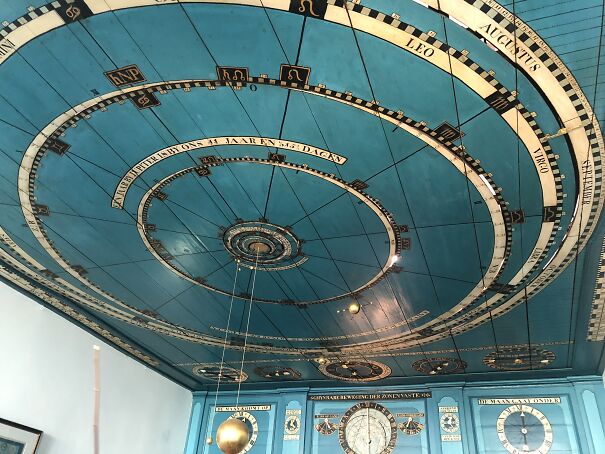
Howabout some of the prehistoric art - paintings, petroglyphs, etc. They were precursors to any modern art and creativity.
I love these kind of articles and the info provided, but the chosen photos are some of the worst out there for most of the locations. Whenever I googled one, I found way better shots online. Maybe it's a copyright thing?
As humanity, we've progressed in many ways but we have also lost a lot. Contemporary art and architecture are "fast" and low labour. Everything now has to be basic, cheap and simple, this makes most of it monotonous and boring. I fear we are not longer able to create beautiful structures and art as in the past.
I really respect all those artists and architectures for creating the most beautiful architects and making it last for over the centuries.
Don't forget this wonder...
Eise Eisinga Planetarium - Franeker - The Netherlands
https://www.planetarium-friesland.nl/en/
The Royal Eise Eisinga Planetarium (Dutch: Koninklijk(e) Eise Eisinga Planetarium) is an 18th-century orrery in Franeker, Friesland, Netherlands. It is currently a museum and open to the public. The orrery has been on the top 100 Dutch heritage sites list since 1990 and in December 2011 was placed on a provisionary list of future UNESCO World Heritage Site candidates. It is the oldest working orrery in the world. Planetariu...f4d6cd.jpg 
Howabout some of the prehistoric art - paintings, petroglyphs, etc. They were precursors to any modern art and creativity.
I love these kind of articles and the info provided, but the chosen photos are some of the worst out there for most of the locations. Whenever I googled one, I found way better shots online. Maybe it's a copyright thing?
As humanity, we've progressed in many ways but we have also lost a lot. Contemporary art and architecture are "fast" and low labour. Everything now has to be basic, cheap and simple, this makes most of it monotonous and boring. I fear we are not longer able to create beautiful structures and art as in the past.
